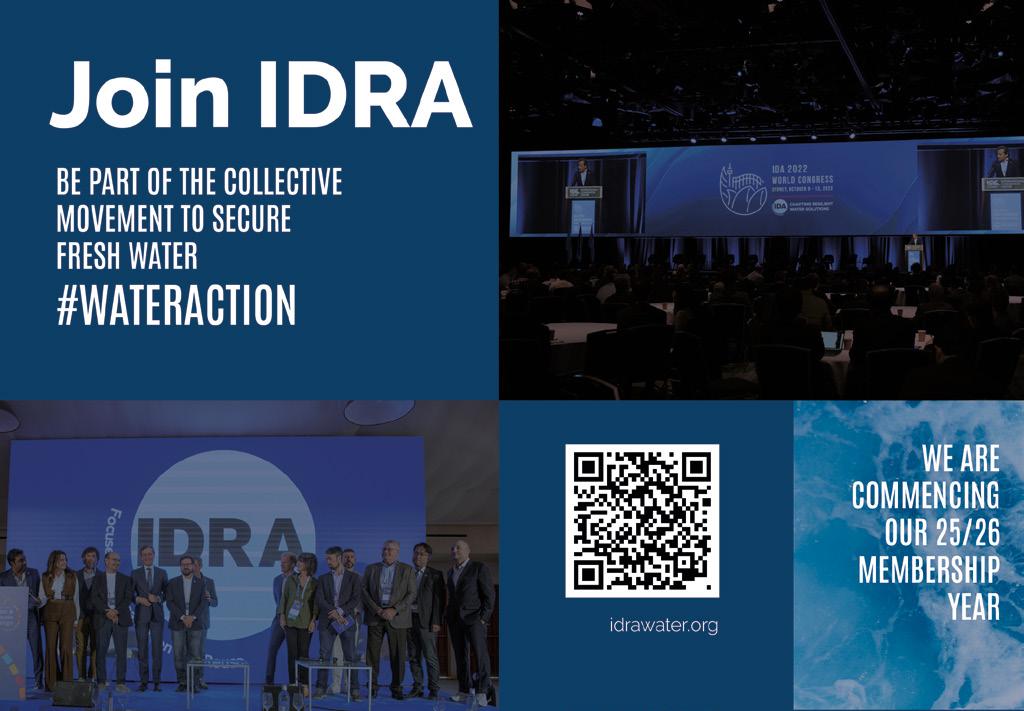CONNECTIONS

Building Water Infrastructure for a Changing Climate
Page 20
Liquid Gold: Rethinking Brine for a Circular Future Page 26
Celebrating a Legacy of Impact: The Career of Prof. John H. Leinhard V. Page 30
From Ice to Infrastructure:
Water Journey and Why Arctic Change Matters for Global Water Security
An exclusive interview with, Hon. Jóhann Páll Jóhannsson, Iceland’s Minister of the Environment, Energy and Climate.
We shape water’s future by connecting people and ideas.

Explore our offering globalwaterintel.com/memberships

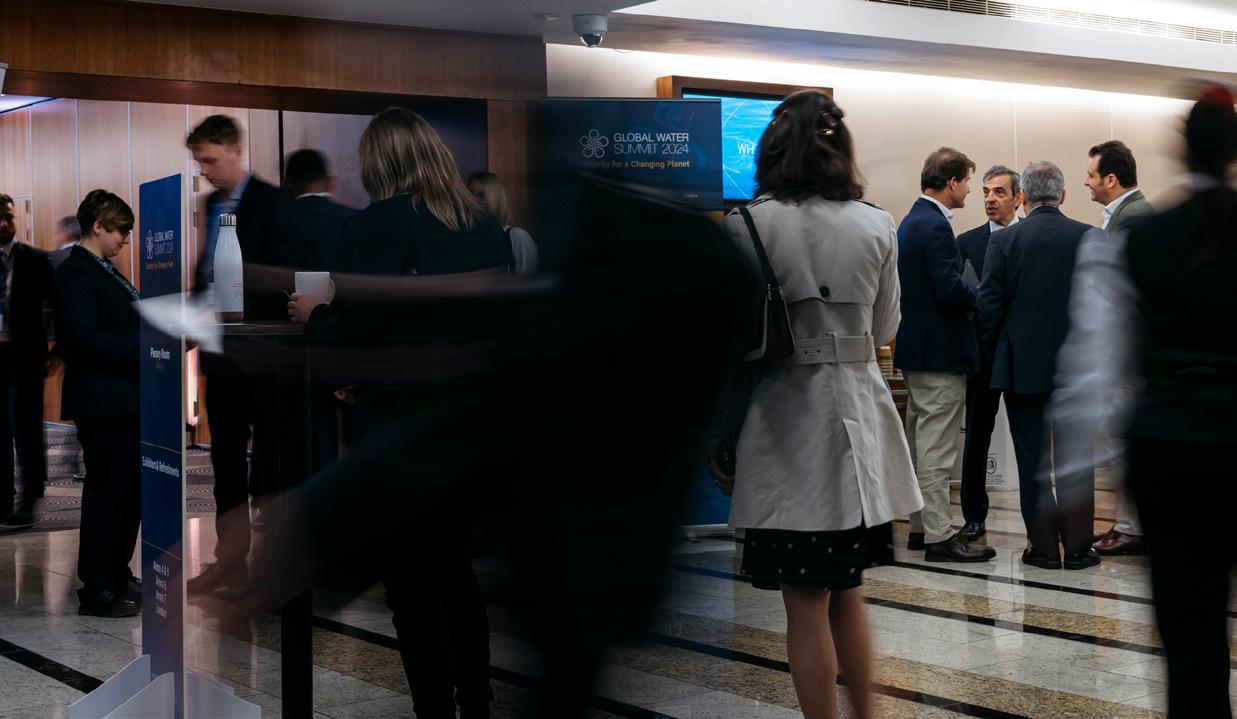
Data
We build unique datasets that inform decision making.
Networks
We have relationships with the people that matter.
Markets
We track projects, technology and competitive dynamics.
Money
We dissect the financial flows that drive the sector.
TABLE OF CONTENTS
MESSAGE FROM THE SECRETARY GENERAL
MESSAGE FROM THE PRESIDENT
COVER STORY:
INTERVIEW WITH HON. JÓHANN PÁLL, ICELAND’S MINISTER OF THE ENVIRONMENT, ENERGY AND CLIMATE
EXECUTIVE VIEWPOINTS
ʞ BUILDING RESILIENT WATER INFRASTRUCTURE FOR A CHANGING CLIMATE
ʞ ENABLING WATER SECURITY THROUGH INNOVATION: HOW ADVANCED MEMBRANE TECHNOLOGIES SUPPORT WATER CIRCULARITY
ʞ LIQUID GOLD: RETHINKING BRINE FOR A CIRCULAR FUTURE
ʞ INNOVATION IS ROOTED IN COLLABORATION: WHAT WE OWE EACH OTHER IS THE WATER
ENOWA NEOM LEADS THE WAY IN BRINE VALORIZATION AND CIRCULAR WATER INNOVATION
IDRA HIGH-LEVEL SEVILLE COLLOQUIUM ON RESILIENT WATER SOLUTIONS
THREE MONTHS TO REYKJAVIK: RETHINKING WATER RESILIENCE AND SECURITY IN A CHANGING WORLD
IDRA Global Connections is published quarterly. The views expressed in articles contributed to IDRA Global Connections are not necessarily the views of the International Desalination And Reuse Association. IDRA assumes no responsibility for unsolicited manuscripts and/or artwork.
IDRA NEWS
ʞ IDRA REYKJAVIK SUMMIT ON WATER AND CLIMATE CHANGE
ʞ IDRA LAUNCHES NEXTWAVE STARTUP PITCH COMPETITION TO ACCELERATE INNOVATION IN GLOBAL WATER CRISIS
ʞ IDRA AND AWS UNITE TO ADVANCE GLOBAL WATER REUSE THROUGH STEWARDSHIP
ʞ WORLD BANK REPORT: SCALING WATER USE: A TIPPING POINT FOR MUNICIPAL AND INDUSTRIAL USE
ʞ BE WATER POSITIVE SETS SAIL: CANADA OCEAN RACING CARRIES A MESSAGE FOR THE WORLD
ʞ INTERNATIONAL WATER LEADERS SHARE INSIGHTS DURING GLOBAL DIALOGUE ON WATER REUSE
ʞ DR. K.C. CHANNABASAPPA MEMORIAL PHD SCHOLARSHIP 2025
ʞ FORTUNE 1000 FIRMS INVITED TO 2025 GLOBAL INDUSTRIAL WATER REUSE CHAMPIONS AWARD
ʞ IDRA APPOINTS CAMILLE CALIMLIM TOUTON AND LUIS NEVES AS SPECIAL ADVISORS TO ACCELERATE SMART WATER SOLUTIONS AND GLOBAL RESILIENCE
ʞ IDRA STRENGTHENS GLOBAL LEADERSHIP WITH FOUR SENIOR APPOINTMENTS TO BOARD, ACADEMY AND COMMITTEES
ʞ IDRA / AFFILIATES/ PARTNERS UPCOMING EVENTS
ʞ IDRA WELCOMES NEW MEMBERS
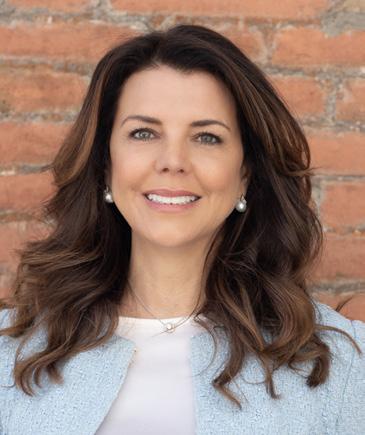
MESSAGE FROM THE SECRETARY GENERAL
Dear Members and Colleagues
Across the globe, we are witnessing remarkable momentum in scaling water reuse. From Singapore’s reclaimed water strategy and California’s potable reuse roadmap to China’s leadership in industrial and municipal reuse, and Namibia’s decades - long success in direct potable reuse, to Andalusia’s shining example in Europe – the message is clear: reuse is no longer optional, it is essential.
Yet scaling reuse takes more than technology. It requires political will, enabling regulation, transparent data, appropriate tariffs, meaningful community engagement, and above all, trust. The most successful examples globally have combined science and storytelling to shift perception, reshape policy, and transform reused water from a fringe solution into a foundational resource. Still, scaling these solutions globally demands overcoming significant hurdles, such as financial constraints, political and public resistance, and unequal access to expertise, particularly in developing regions. By tailoring strategies and fostering equitable collaboration, we can address these challenges to ensure inclusive progress.
This quarter’s issue of Global Connections comes at a pivotal moment, with IDRA actively convening global leaders and innovators to accelerate the adoption of reuse and desalination solutions to mitigate the impacts of climate variation across the globe. From Taipei to Andalusia, New York, Reykjavik, Dakar, Kuwait City, and Riyadh, our community is shaping the future of water resilience.
Seville Colloquium – Key Takeaways
IDRA’s recent High - Level Colloquium on Resilient Water Solutions, held in Seville in June, highlighted how regional action can drive global ambition.
One clear theme emerged: when regulation, innovation, and political commitment align, water reuse and desalination can scale dramatically. In Andalusia, where drought is a daily challenge, integrated water management delivers real impact. Since 2019, regenerated water volumes have quadrupled—from 17 to 70 hm³, now making up 17% of the region’s water resources, with a goal of reaching 180 hm³ by 2027.
The colloquium also showcased:
• Integrated policy frameworks, where EU and regional alignment is accelerating practical outcomes.
• Innovative project models, from large-scale desalination and reuse initiatives in Morocco, Tunisia, Algeria and Egypt to advanced tertiary treatment systems in Spain’s Guadalquivir Basin.
• Global knowledge exchange, connecting case studies and expertise from Latin America, the United States, and the Middle East to build a shared blueprint for scaling reuse globally.
Together, these insights point to a new era in which reuse and desalination are no longer niche technologies—they are standard tools for resilience, resource circularity, water quality, food - water-energy security, and water stewardship.
Our global engagement deepened further this quarter through participation in high - level forums such as the AWS (Alliance for Water Stewardship) Global Forum and the United Nations Preparatory Meetings ahead of next year’s Water Conference hosted by Senegal and the UAE. These meetings reaffirmed that advancing water reuse is central to collective action on climate adaptation, and they opened doors for IDRA to contribute technical expertise and regulatory insight to intergovernmental processes.
Looking Ahead
The momentum around desalination and reuse continues to build across continents. In June, I was honored to represent IDRA at the AI with Purpose Summit in Taipei. We explored how digital innovation – from AI to digital twins – accelerates water reuse efficiency in high-demand sectors such as semiconductors and data centers. IDRA helped spotlight water's interdependence and critical role in sustainable tech development.
As we look toward our 2025 flagship event, the IDRA Reykjavik Summit on Water & Climate Change this October, excitement is building around several key moments:
• Our dedicated Technical and Thematic Programs are now live on the waterandclimatechange.org website, with key topics of conversation right across the industry.
• The IDRA YLP NextWave Start-Up Competition will showcase groundbreaking innovations from the next generation of water entrepreneurs.
• The ENOWA NEOM Workshop will offer a unique lens on designing integrated, circular water systems for future cities with specific insights from the Duba Valorization Plant.
These elements underscore the significance of the Reykjavik Summit as a global platform for collaboration and innovation.
In addition, we are proud to announce that preparations for the IDRA World Congress 2026 are now underway, with a Call for Extended Abstracts set to be launched during the Reykjavik Summit – inviting the global community to help shape the agenda for Riyadh.
IDRA White Paper Launch
I encourage all of you to look out for the launch of the IDRA White Paper on Collective Action to Address Water Scarcity to be released at the Reykjavik Summit. This paper distills global lessons, case studies, and presents a bold framework for collective impact that we hope will inspire governments, utilities, and innovators worldwide.
A big thank you to Boston Consulting Group, Stantec, and all contributors for co-curating and publishing this paper with the IDRA.
Thank you to our contributors
I would like to thank our contributors this month for their expertise and invaluable input, among them the Hon. Jóhann Páll, for an insightful cover story on Iceland’s renewable ecosystem and the shifting patterns in the Arctic; NYUAD Professor Nidal Hilal, for sharing his world - renowned expertise on brine mining; Marco Arcelli, Chief Executive Officer of ACWA Power, for his insights into building resilient water infrastructure; Verónica García Molina, Marketing and Innovation Director for the Industrial Water & Energy Market Segment at DuPont Water Solutions, for her important perspective on advanced membranes; and Cristina Novo of Smart Water Magazine for her excellent reporting at our Seville Colloquium.
Lastly, we look forward to reconnecting with the global water community in Reykjavik and wish you all a prosperous and productive Q3.
Warm Regards, Shannon McCarthy
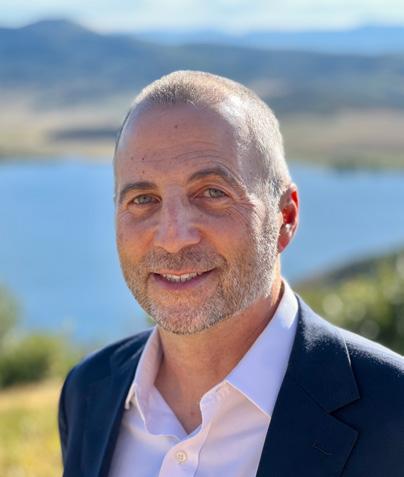
MESSAGE FROM THE PRESIDENT
Dear IDRA Community,
Imagine a world where every child drinks clean water, cities thrive in deserts, and scarcity yields ingenuity. This is the future the International Desalination and Reuse Association (IDRA) is forging, a world where clean and abundant water is a promise shared equitably across generations. As we open the Summer 2025 edition of IDRA Global Connections Magazine, we stand poised to transform this vision into reality, driven by innovation, trust, and relentless commitment to progress.
My decades working in the water sector have shown me that water is the pulse of life. From shaping global water policy to championing
sustainable reuse solutions worldwide, I’ve learned that progress unites technology with humanity. As IDRA’s President, I am committed to ensuring that desalination and reuse empower every community to flourish harmoniously with our planet.
Yet, challenges loom large. Over two billion people lack access to safe drinking water, with many marginalized communities hit hardest. Policy barriers stall progress: fragmented regulations and unclear standards deter reuse and desalination adoption, while financing gaps hinder investment in underserved regions. We also stand at a digital crossroads; while technologies advance, policy and institutional capacity often lag, threatening equitable access and climate resilience. These

obstacles can deepen water inequity, leaving vulnerable populations at risk.
Solutions are within our grasp. Advanced membrane filtration removes persistent PFAS contaminants, ensuring safe water. AI-driven monitoring optimizes water flows, slashing waste and energy use. IDRA’s “One Water” approach promotes integrating these solutions, managing all water as a unified resource for equity and sustainability. By scaling education campaigns and stakeholder engagement, we can overcome cultural stigmas and make reuse a global cornerstone.
The IDRA Reykjavik Summit on Water and Climate in October 2025 will catalyze change. Uniting
policymakers, innovators, and advocates, we will craft policies to dismantle regulatory and social barriers, ensuring reuse and desalination reach those most in need.
I call our members, partners, and readers to be the change and to shape this future. Join us in advocating for equitable policies, supporting reuse projects, and engaging on our global platforms. Together, we will forge a water-resilient world where every drop sustains our communities and planet.
With unwavering resolve,
Jon Freedman President
FROM ICE TO INFRASTRUCTURE:
Iceland’s Water Journey: Why Arctic Change Matters for Global Water Security Q+A.
In this exclusive interview, Hon. Jóhann Páll Jóhannsson, Iceland’s Minister of the Environment, Energy and Climate, shares how a nation shaped by glaciers and geothermal springs became a global leader in renewable energy and water stewardship. From the rapid retreat of Arctic ice to bold new initiatives like Jarðhiti jafnar leikinn, Iceland’s story is both a warning and an inspiration; showing how innovation, long‑term planning, and respect for natural resources can drive resilience in a changing world.

Speaking ahead of the IDRA
Reykjavik Summit, Minister Páll explains what other nations can learn from Iceland’s experience, why Arctic change affects water security everywhere, and how collaboration can turn today’s challenges into tomorrow’s solutions.
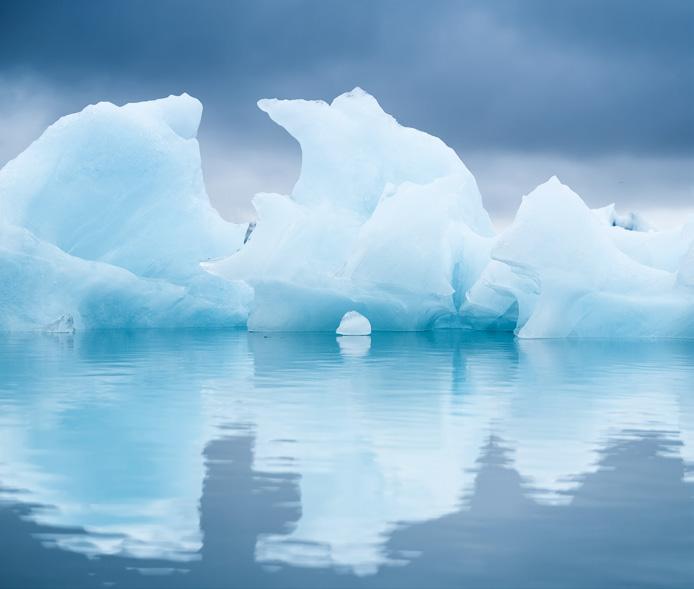
Q: Iceland is often described as a country shaped by water. From glaciers to geothermal energy, what makes Iceland’s relationship with water so unique?
A: Electricity in Iceland is produced almost entirely by renewable sources, mainly hydropower (around 70%) and geothermal energy (around 30%). The energy system is therefore driven on water, be it hydropower or geothermal.
The hydropower energy is stored in the glaciers which provide meltwater that feeds into rivers and reservoirs for hydropower. In the short term, climate change is expected to lead to increased rates of glacial melt, potentially providing for more hydropower in the nearest decades. However, projections indicate that glaciers could disappear within
100 200 years if current climate trends continue. Therefore, continuing to develop geothermal energy is necessary to stabilize the energy system.
Most Icelandic homes use geothermal energy for domestic heating which is highly cost effective helping Icelanders to enjoy some of the lowest heating costs in the world.
Q: How has Iceland built resilience into its water and energy infrastructure over the decades, and how does that position you to face today’s climate risks?
A: Iceland’s reliance on sustainable sources contributes significantly to its resilience in energy supply. The electricity grid is designed to handle diverse energy generation from various renewable
sources. Investments in grid modernization and infrastructure expansion have been prioritized to accommodate growing energy demands and integrate new technologies. Recent volcanic activities have tested the resilience of energy infrastructure in urban areas. These events have led to insights regarding the need for adaptive management strategies and emergency response plans to maintain service continuity.
Q: Iceland is pioneering circular approaches to geothermal and water systems. Can you share examples of innovation that could inspire other nations?
A: During the 20th century, Iceland went from one of Europe’s poorest countries, reliant on peat and imported coal, to a nation where almost all stationary energy comes from renewables. Icelanders began rerouting hot spring water to heat buildings, and after a 1920 power shortage in Reykjavik, they explored harnessing the earth’s heat. Early attempts failed, but in 1967 the first geothermal power station, Bjarnarflag near Lake Myvatn, opened—and the rest is history.
Fast forward to March this year: I introduced the largest geothermal initiative in Iceland this century, Jarðhiti jafnar leikinn. One billion krónur will be invested between 2025–2028 to expand geothermal use, cutting heating costs for homes, companies, municipalities, schools, and nursing homes in cold regions, driving regional development and resilience.
Geothermal energy in Iceland powers both heat and electricity. Lower temperature resources supply district heating; high
temperature steam drives power plants. Many are combined heat and power plants, reusing water for snow melting and pools before returning it to the system.
Around these plants, resource parks turn waste streams into opportunity; capturing and storing CO2, producing algae and dietary supplements, and even generating green hydrogen during off‑peak hours.
Iceland is uniquely positioned in the Arctic region, making it a critical observer of climate change. The country has witnessed numerous visible changes due to rising temperatures and global warming.
Q: You’ve described Iceland as a frontline observer of Arctic climate shifts. What visible changes are you witnessing, and how do they affect Iceland’s ecosystems and communities?
A: Iceland is uniquely positioned in the Arctic region, making it a critical observer of climate change. The country has witnessed numerous visible changes due to rising temperatures and global warming.
Iceland’s glaciers, which cover about 11% of its landmass, are melting rapidly. Glaciers like Okjökull have completely disappeared,
while others, such as Vatnajökull, are retreating at an accelerated pace. The loss of glaciers significantly impacts freshwater reserves, as glaciers act as natural “water towers” that regulate river flow.
As glaciers recede, river flow patterns change, affecting hydropower production, a key energy source in Iceland. Increased sedimentation disrupts aquatic ecosystems and alters habitats, impacting species such as salmon and trout.
Melting glaciers also contribute to global sea‑level rise, which, combined with coastal erosion, endangers low‑lying communities and infrastructure. Coastal ecosystems, such as wetlands, are at risk of being submerged, leading to habitat loss for many bird species.
Warmer temperatures are altering Iceland’s flora and fauna. Invasive plants like lupines are spreading, while fish stocks, such as capelin, shift north, affecting local fisheries.
The tourism sector, reliant on glaciers and ice caves, also faces challenges as these natural attractions vanish or change. A country‑wide adaptation plan is under way, supported by ongoing research.
Q: Why should water leaders in the Middle East, Africa, Asia, or the Americas care about what's happening in Iceland’s glaciers?
A: The changes in Iceland’s glaciers are not isolated; they have global implications through Earth’s interconnected climate and water systems.
Melting glaciers contribute to rising sea levels, threatening coastal cities and small
island nations worldwide. Regions like the Americas, South Asia, and Africa are especially vulnerable to flooding and storm surges.
In the North Atlantic, the loss of Arctic ice affects thermohaline circulation (such as the Gulf Stream), with potential ripple effects on global weather patterns.
Iceland plays a key role in monitoring the North Atlantic Ocean’s currents, studying how freshwater influx from glacial melt affects global climate systems.
Glaciers also act as natural freshwater reservoirs, so their decline raises urgent questions about water security—particularly in regions like the Middle East and Africa, where scarcity is already critical.
Iceland’s monitoring and adaptation efforts offer valuable lessons. Its hydropower strategies, for example, can inspire sustainable water management elsewhere. The melting of Iceland’s glaciers is a stark reminder of the urgency of global climate action and the need for nations to collaborate on safeguarding water resources.
Q: How is Iceland using science, monitoring, or policy to raise early warning signals for the world?
A: Iceland plays a key role in monitoring the North Atlantic Ocean’s currents, studying how freshwater influx from glacial melt affects global climate systems. Findings from Iceland’s research therefore contribute to global climate models and predictions.
Organizations like the Icelandic Meteorological Office (IMO) and the University of Iceland conduct extensive research on glacial retreat, ice mass loss, and their impacts. Satellite imaging, GPS measurements, and aerial surveys are used to track changes in glaciers and provide real time data to scientists globally.
Iceland’s reliance on renewable energy, particularly hydropower and geothermal energy, demonstrates how nations can reduce their carbon footprint and adapt to climate change. These policies serve as examples for other countries looking to transition to sustainable energy sources.
Iceland has developed early warning systems for natural disasters, such as glacial outburst floods (jökulhlaups), which can serve as models for other nations to prepare for climate related disasters. These systems integrate scientific research with real time monitoring to minimize damage and save lives.
In addition, Iceland uses symbolic acts, such as the memorial for Okjökull glacier, to highlight the urgency of climate change. These actions draw global attention and inspire public and political action.
Q: As global water stress intensifies, what lessons can be drawn from Iceland’s model of water governance and planning?
A: Iceland’s River Basin Management Plan, aligned with European standards, requires every water body to reach at least “good status,” protecting ecosystems while enabling sustainable use. In force since 2022 and running through 2027, it covers over 100 river basins and drives monitoring, restoration, and community input.
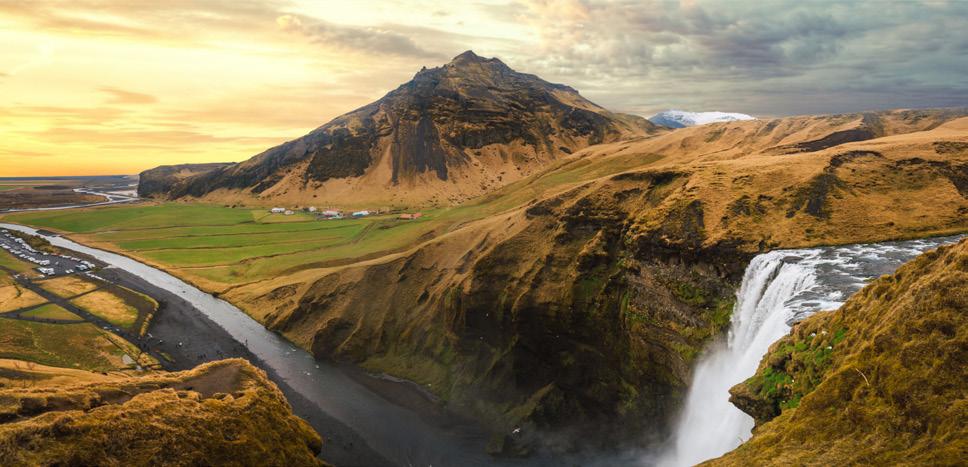
Through the €22 million (3.5 billion krónur) LIFE ICEWATER program, we’re expanding data collection, upgrading wastewater facilities, and coordinating municipalities, industry, and scientists. Early results already show reduced nutrient discharge and stronger compliance with water‑quality targets.
The lesson is clear: science‑based, inclusive governance backed by real investment builds long‑term resilience for both people and ecosystems.
Q: What are the biggest water-related risks you believe the world is underestimating?
A: Chemical use and discharge into water including forever chemicals, micro pollutants, litter and microplastics.

Q: In your view, what does a “water-secure world” actually look like in 20–30 years; and what do we need to do now to build it?
A: A water secure world is one where every individual has reliable access to clean water for health, livelihoods, and dignity. It means sustainable management of water resources, water quality is protected from pollution, and communities are resilient to climate driven extremes like droughts and floods.
To build that future, we need to start now. That means investing in nature based solutions, modern infrastructure, and strong governance frameworks and Iceland is underway to strengthen its River Basin Management Plan and the legal framework around Water Governance. It also means closing the data gap through science and monitoring, fostering international cooperation on shared water resources, and confronting emerging threats like microplastics and chemical pollution head on. Ultimately, it requires viewing water not just as a commodity, but as a shared heritage and human right.
Q: Iceland is a small country, yet it plays a meaningful role in global environmental diplomacy. How do you see Iceland’s role evolving in global water and climate cooperation?
A: Our deep experience in managing geothermal and hydropower resources gives us practical knowledge that can be shared globally. Looking forward, Iceland will continue to use its soft power in science diplomacy, amplifying data,
building partnerships, and contributing to international agreements. Through international collaboration and initiatives like the Reykjavik Summit, we aim to inspire, convene, and catalyze action.
Q: What do you hope the upcoming IDRA Reykjavik Summit will achieve? Why is it important that this conversation is happening in Iceland now?
A: The Reykjavik Summit is a timely opportunity to bring the global water community together. Iceland offers a powerful setting: a nation powered by water, feeling the frontlines of Arctic change, and committed to sustainable development. This is a moment to listen, to learn, and to lead. My hope is that the Summit will enhance cooperation between engineers, policymakers, scientists, and communities, and shift the global conversation from urgency to implementation.
Q: What message do you want to deliver to the engineers, utilities, and policymakers attending the Summit from climatevulnerable regions?
A: Your work is essential. Whether you are building flood defenses, managing drought risk, or rethinking urban water infrastructure, know that the global water community stands ready to support, collaborate, and share solutions. We all benefit when your communities thrive.
Q: If there’s one insight or warning you want the global community to take from Iceland’s experience with water and climate, what would it be?
A: My warning is simple: Even in a country rich in water, climate change is rewriting the rules. Our glaciers are disappearing. Ecosystems are shifting. The systems we built for abundance must now adapt to volatility. An enourmous challenge, but we should work towards the transformation with long term thinking, respect for nature, and collective action. We must build systems that are not only resilient, but regenerative.
It is essential to think in generations, not election cycles, and every region has unique resources, and centering those unique resources to build resilience systems.
Q: Iceland has proven that sustainable water and energy solutions are possible. What advice would you give to governments or leaders just beginning their own resilience journey?
A: Iceland’s success was the result of decades of investment in our resources, through planning, experimentation, and commitment to the common good. Traditional and local knowledge is imperative, and investment in innovation and systems that can evolve will pay off. It is essential to think in generations, not election cycles, and every region has unique resources, and centering those unique resources to build resilience systems.

EXECUTIVE VIEWPOINT
BUILDING RESILIENT WATER
INFRASTRUCTURE
FOR A CHANGING CLIMATE
By Marco Arcelli, Chief Executive Officer, ACWA Power
Climate change is intensifying the global water crisis, demanding innovative and sustainable solutions to meet the growing need for freshwater. Global demand for water is increasing, and it is estimated that by 2050, three out of four people worldwide will face water scarcity. Given that 40% of the world’s population lives within 100 kilometres of a coastline, efficient and sustainable seawater desalination can provide a solution.
ACWA Power currently has a water desalination portfolio of 9.5 million m3/day across 23 projects (operational, under construction or in advanced development).
As a global leader in desalination, ACWA Power is committed to capturing our fair share of the growth opportunities in the Global South, as part of the company’s ambitious 2030 plan to triple assets to 250, and to scale assets under management to USD 250 billion. We will continue to innovate, focus further on seawater reverse osmosis (SWRO) technology, and reduce power
consumption and tariffs, to provide reliable and affordable water access around the world.
In doing so, we remain focused on solving the energy quadrilemma—delivering solutions that are reliable, affordable, sustainable, and secure. By integrating low-carbon power generation with efficient desalination, we aim to balance these four imperatives, ensuring water security without compromising our climate goals or the resilience of energy systems.
Solving water security one project at a time
Tackling the pressing challenge of freshwater shortages requires a fundamental shift towards adaptable solutions that can reliably deliver water while minimising environmental impact. Desalination, powered by renewable energy and integrated with circular economy principles, plays a vital role in this transformation. However, a tailored approach is crucial for maximising the effectiveness and sustainability of desalination projects. ACWA Power currently has a water desalination portfolio of 9.5 million m3/day across 23 projects (operational, under
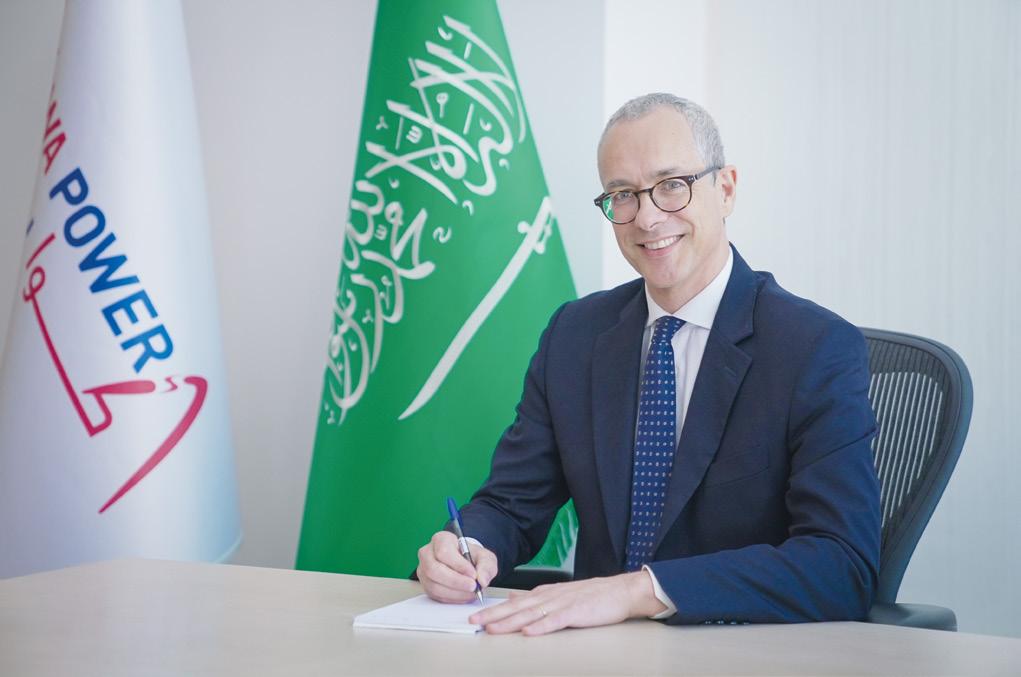
construction or in advanced development). We produce about 20-30% of the total desalinated water in the Kingdom of Saudi Arabia, Oman, UAE and Bahrain, demonstrating our significant impact on water security in the region.
It is important to keep in mind that when delivering desalination solutions, each region presents unique challenges and opportunities, requiring careful consideration of local conditions. Coastal geography, water salinity, energy availability, environmental regulations, and community needs all play a crucial role in shaping the optimal design and implementation of a desalination plant. For example, a project in a region with abundant solar resources might prioritise maximising solar PV integration, while a project in a densely populated area
might focus on minimising land use and noise pollution. Similarly, regions with sensitive marine ecosystems require meticulous attention to brine management and environmental mitigation strategies.
SWRO and further improvements has also enabled us to reduce the specific power consumption (SPC) by 87% over the past decade.
Tailoring desalination projects also involves understanding and addressing the specific water needs of the community. This includes considering factors such as water quality requirements, projected demand growth, and
the existing water infrastructure. Engaging with local stakeholders is essential for ensuring that a desalination project aligns with community priorities and delivers tangible benefits. This collaborative approach not only fosters trust and ownership but also helps identify potential challenges and opportunities early on, leading to more effective and sustainable outcomes.
Lessons from our own journey with desalination
ACWA Power's experience with desalination underscores the importance of this tailored approach. Some of our early projects in Saudi Arabia demonstrated the potential of seawater reverse osmosis (SWRO) as a way to reduce the carbon footprint associated with desalination, paving the way for a market-wide shift. Subsequent investments in refining SWRO technology and integrating it with renewable energy, particularly solar PV, have been instrumental in cutting the cost of water production almost in half since 2007. SWRO and further improvements has also enabled us to reduce the specific power consumption (SPC) by 87% over the past decade.
Today we are going beyond that and focusing on further reducing the environmental footprint of our plants. Two of our operational water desalination plants, Taweelah IWP in the UAE, the world’s largest efficient RO facility, and Jazlah IWP (Jubail 3A) in the Kingdom, have successfully integrated on-site captive PV plants. This integration has reduced grid power

dependency by approximately 25%, achieving record low SPCs of 2.8 kWh/m³, and cutting over 2.5 million tonnes of CO 2 e emissions annually.
And the Red Sea project in Saudi Arabia, a new landmark luxurious tourist destination where ACWA Power developed and operates all the utilities, reached a global benchmark of sustainability with the largest fully off-grid renewable-powered desalination plant, power by a 500 MW renewable energy system and 1.3 GWh of battery storage. The project also includes an innovative wastewater treatment facility using constructed wetlands, which processes 8,000 m³/day of effluent without chemicals, while also promoting biodiversity and recycling materials within the construction process.
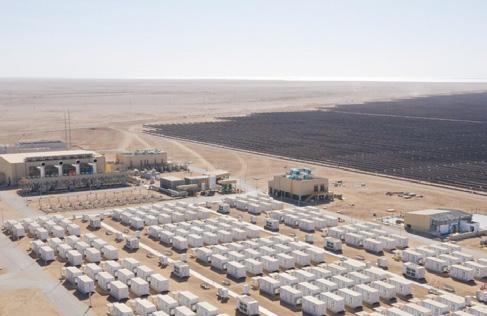
Emphasizing the need for climate-resilient infrastructure, ACWA Power promotes a thoughtful integration of desalination with renewable energy and circular economy principles to effectively address water scarcity. The initiative highlights the importance of customized approaches to meet regional needs, aiming to unlock desalination’s potential for a sustainable, water-resilient future.
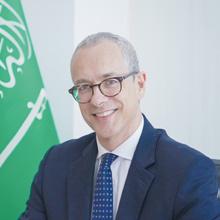
About the Author
Marco Arcelli is the CEO of ACWA Power, the Saudi national champion for renewable energy, with over $100 billion of investments to date. With 30 years of international experience in energy, infrastructure, retail, and digital innovation, he has held key roles including CEO of Enel North America, CEO of Enel Trade, and Chairman of
EP New Energy. He serves on multiple boards and mentors women in business and young professionals. Marco holds a master’s in mechanical engineering from the Università degli Studi di Genova, Italy and completed Harvard’s Advanced Management Program.
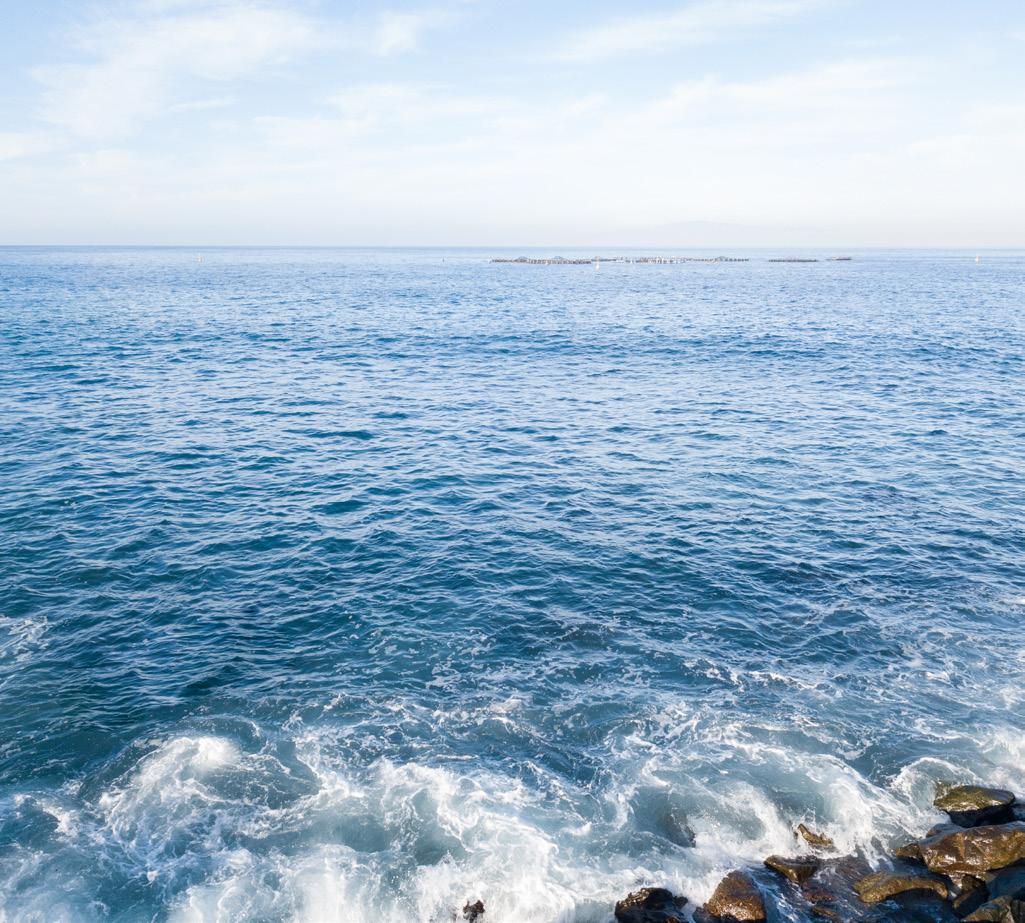
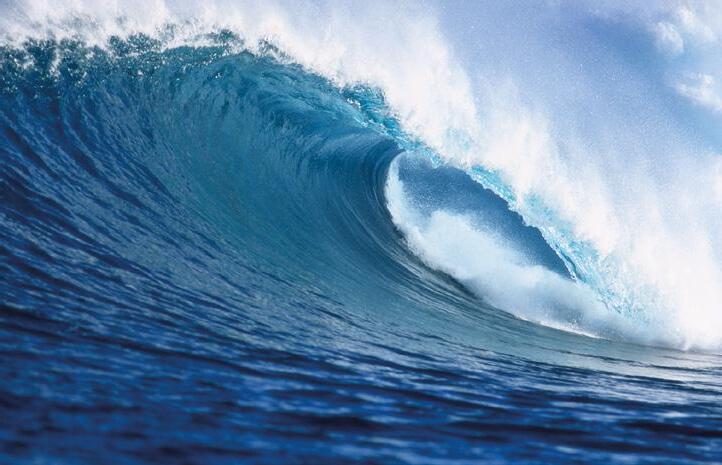

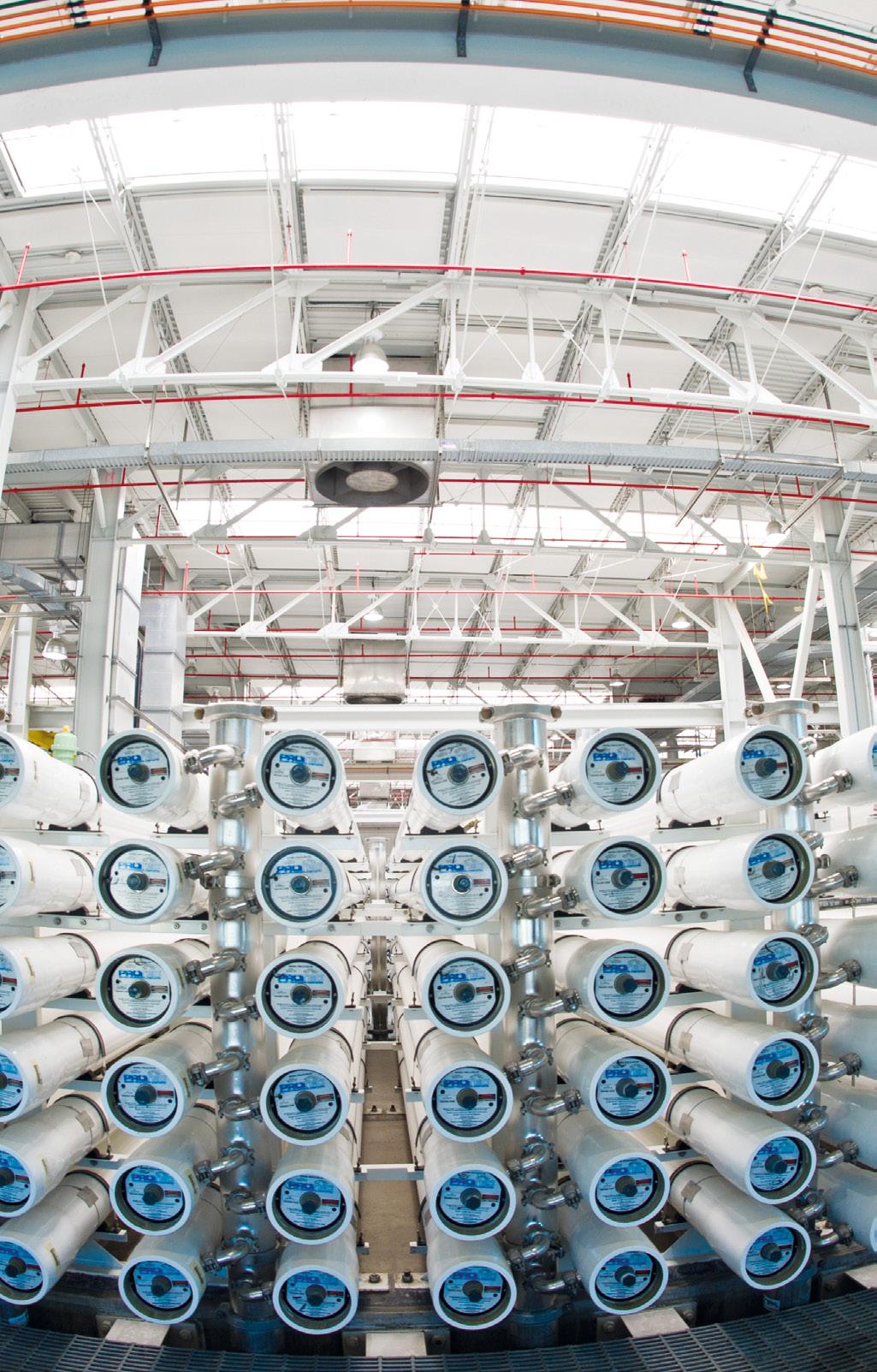
EXECUTIVE VIEWPOINT
ENABLING WATER SECURITY THROUGH INNOVATION: HOW ADVANCED MEMBRANE TECHNOLOGIES SUPPORT WATER CIRCULARITY
By Mrs. Verónica García Molina, Marketing and Innovation Director of the Industrial Water & Energy Market Segment in DuPont Water Solutions.
Across the globe, water systems are under increasing stress from climate change, population growth, and aging infrastructure. According to the UN World Water Development Report, approximately half of the world’s population experiences severe water scarcity for at least part of the year. Facing these challenges, industries, governments and utilities are turning to circular water strategies that recover, treat, and reuse water to relieve their dependence on freshwater sources. At the heart of this transformation is a suite of advanced membrane technologies that are making circular water systems more efficient, scalable, and viable than ever before. When it comes to embracing reuse, the roles of municipalities and industries are inextricably linked.
Membrane innovation is playing a pivotal role in this shift. Proven technologies such as reverse osmosis (RO), nanofiltration (NF), ultrafiltration (UF) and membrane bioreactors (MBR), alongside emerging solutions such as membrane aerated biofilm reactors (MABR)
and closed-circuit reverse osmosis (CCRO), are enabling more efficient wastewater treatment processes with higher water recovery and lower energy use.
High recovery RO systems such as CCRO have emerged, enabling recovery rates up to 98 percent.
Dating back to the 1970s, RO and NF membranes have been used to treat wastewater, brackish water, and seawater. Recent advancements have significantly improved their performance, allowing for higher recovery rates and lower energy consumption. High recovery RO systems such as CCRO have emerged, enabling recovery rates up to 98 percent. These higher recovery rates can help make every drop count for regions faced with water scarcity.
As industrial water users deal with increasing water scarcity and rising water costs, alternative water sources such as municipal wastewater or industrial wastewater are gaining acceptance and adoption. In particular, municipal wastewater reuse represents an interesting opportunity to fulfill industrial needs in areas where water availability may be compromised due to inconsistent rainfall during the year, for example. Tapping into a reliable source of water such as municipal wastewater can help industrial facilities maintain steady operation in industrial processes. Once considered an aspirational concept, this is now becoming a reality in regions struggling with water scarcity.
In addition to adopting new water sources, industries are also pursuing higher water recovery and wastewater reuse schemes to help reduce their freshwater consumption. In
some instances, such industrial wastewater treatments are conceived additionally to meet stringent water discharge regulations and growing needs around valuable resource recovery from feed water streams.
Due to the high costs and massive energy consumption of traditional zero liquid discharge (ZLD), many facilities are seeking alternatives. Around the world, we’re in the midst of a paradigm shift toward embracing Minimal Liquid Discharge (MLD) more broadly. Utilizing reverse osmosis and nanofiltration elements, an MLD approach can help minimize the operating costs of achieving higher water recovery and reduce energy consumption compared to traditional ZLD processes that rely on evaporation.
Industrial manufacturers aren’t alone in embracing reuse as a new source of water.
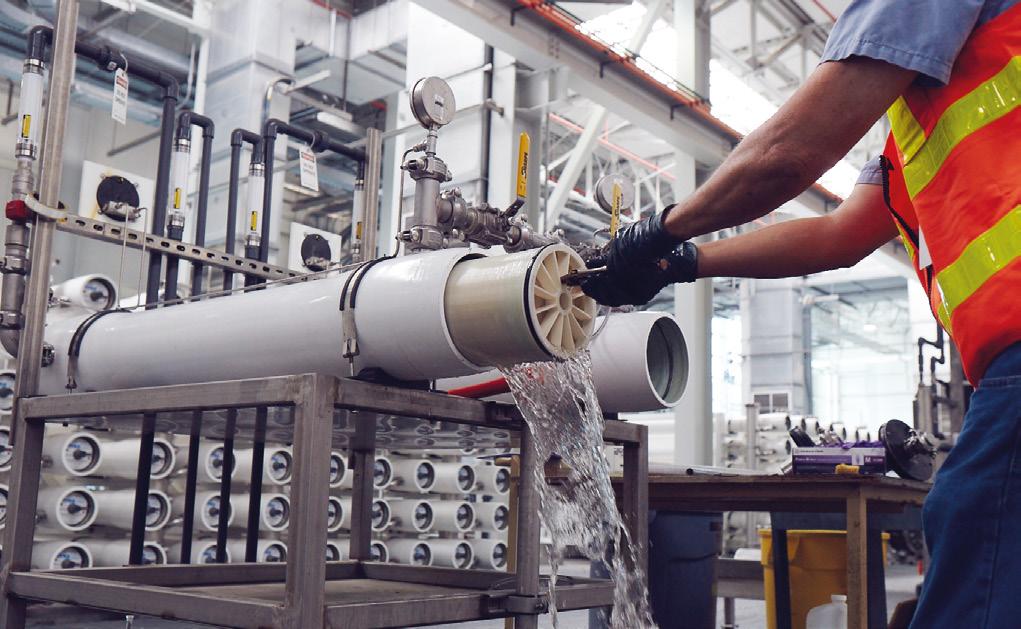
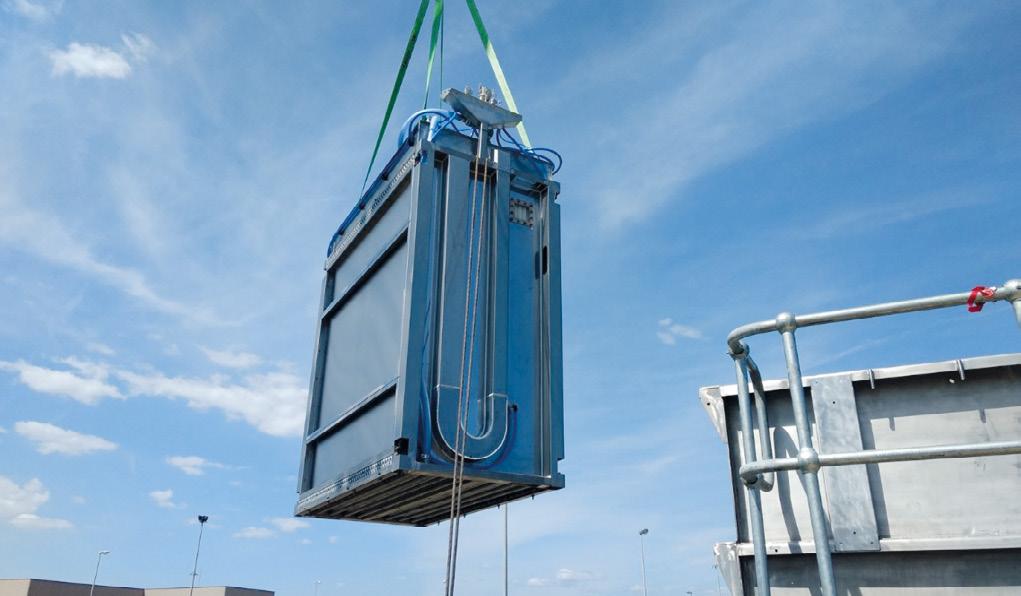
Potable reuse has been steadily shedding its stigma and gaining momentum as a safe, reliable water supply. Treatment schemes, often combining membrane-based technologies such as MBR or UF and RO, are at the core of these solutions. They provide robust, multi-barrier protection against pathogens, pharmaceuticals, and other contaminants, producing water that meets or exceeds regulatory standards. As more municipalities adopt potable reuse regulations, membrane technologies are proving essential to ensuring public health and building public trust.
As a global water community, we need to lead the way to make sure we’re making the same commitment to elevating the importance of reuse when it comes to wa -
Membrane Aerated Bioreactor (MABR) technology, while not directly tied to reuse applications, also has an important role to play in aerobic wastewater treatment. As cities around the world continue to grow within the limitations of an aging infrastructure, MABR
In the realm of wastewater treatment, MBR systems are helping municipalities and industries produce high-quality effluent suitable for reuse. These systems integrate biological treatment with membrane filtration, eliminating the need for secondary clarification and sand filtration. Their compact design and automated operation make them ideal for urban environments and retrofit and expansion projects.
offers a drop-in solution that can increase wastewater treatment capacity without having to invest to increase the plant’s footprint. MABR systems can enable simultaneous nitrification and denitrification that can help reduce nutrients that promote biofouling, thereby extending membrane lifespan by the time the effluent reaches an RO-based reuse system.
As the challenges facing water systems become more complex, it is clear that the role of advanced membrane technologies will only grow. Even as
the stigma around reuse—specifically potable reuse—has diminished in recent years, it will continue to take collective effort and supportive regulatory frameworks to help our communities embrace reuse. From a young age, we teach our children about the 3 R’s, instilling the importance of taking care of our environment by reducing, reusing and recycling many of our everyday materials. As a global water community, we need to lead the way to make sure we’re making the same commitment to elevating the importance of reuse when it comes to water.
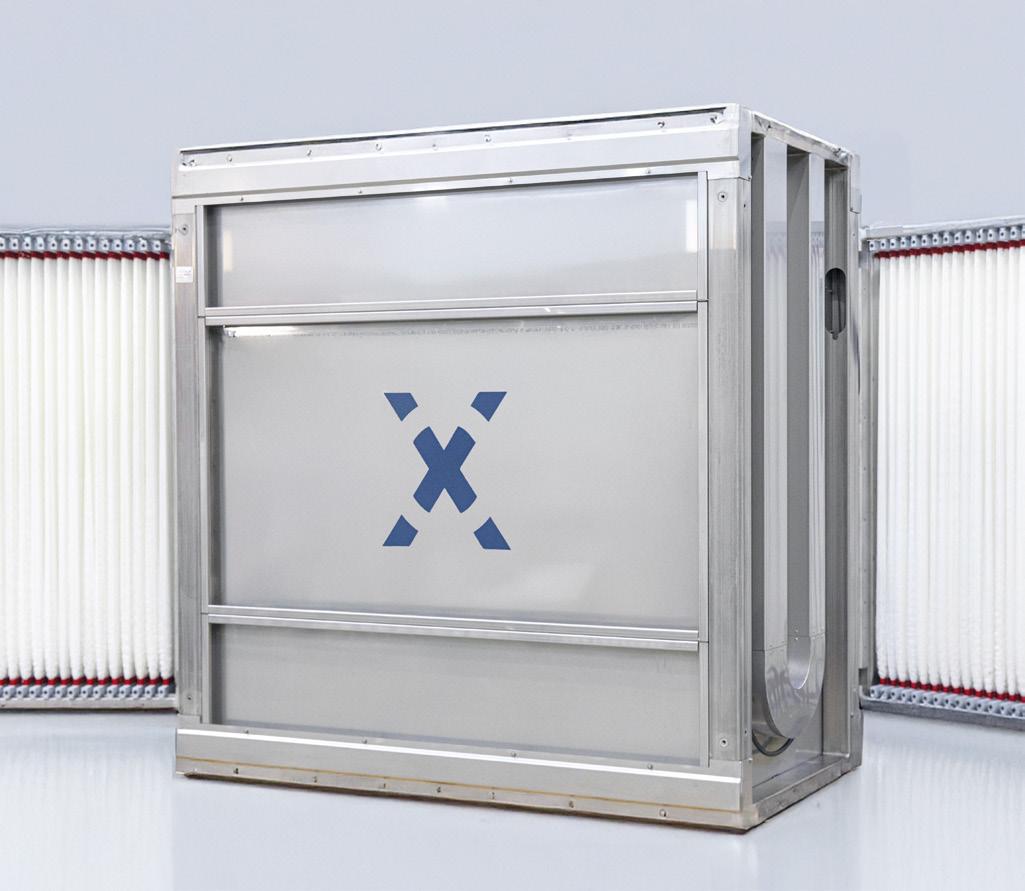
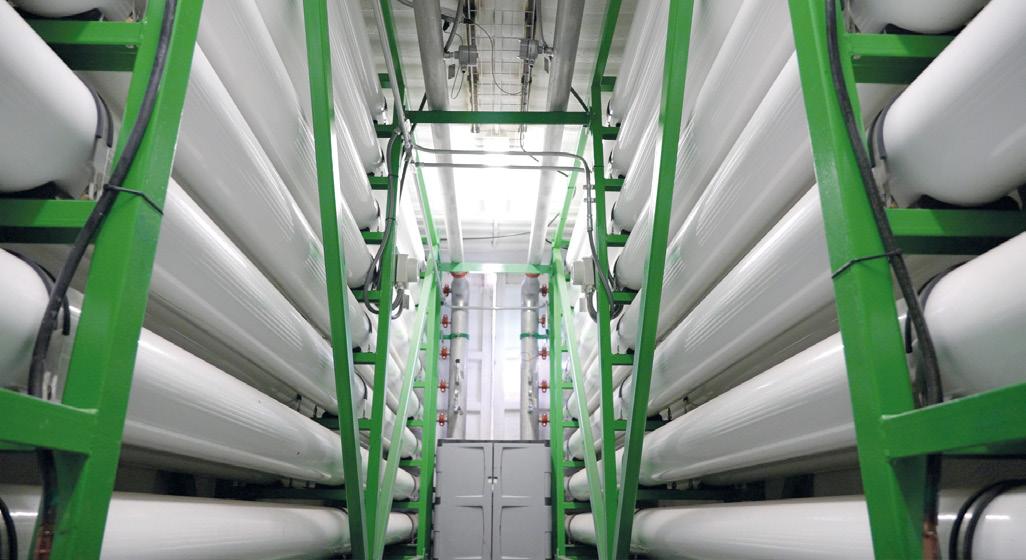
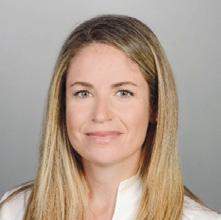
About the Author
Verónica García Molina holds a PhD in Chemical Engineering from the University of Barcelona (Spain), a MSc. in Chemical Engineering from the same institution and a MSc. in Chemistry from the Lappeenranta University of Technology in Finland. She is a professional with 20 years of experience in the water sector, covering multiple technologies, Ion Exchange Resins, Reverse Osmosis, Nanofiltration, and Ultrafiltration with expertise in several market segments, including Municipal and Desalination, Industrial, Wastewater and Energy, and developing segments such as Green Hydrogen and Lithium and more established sectors such as Nuclear.

Verónica joined DuPont Water Solutions (formerly “Dow Water Solutions”) in 2006 and has developed her professional career since in the same company. She has held several positions in the technical field such as Technical Service Leader, Application Development Leader, Regional R&D Manager and since 2018 she is the Marketing and Innovation Director of the Industrial Water & Energy Market Segment in DuPont Water Solutions. In 2025, she joined the International Desalination and Reuse Association (IDRA) Board of Directors.

EXECUTIVE VIEWPOINT
LIQUID GOLD: RETHINKING BRINE FOR A CIRCULAR FUTURE
By Prof. Nidal Hilal. Director of NYUAD Water Research Center. New York University Abu Dhabi
Brine has long been seen as a costly byproduct of desalination: a disposal headache rather than an opportunity. But at NYU Abu Dhabi’s Water Research Center, we see brine differently: not as waste, but as liquid mines rich in critical minerals. This mindset shift from disposal to valorization is crucial for regions like the Middle East, where brine volumes are climbing alongside increasing desalination capacity to meet ever-intensifying water scarcity. Every day, desalination plants worldwide generate over 100 million cubic meters of brine, enough to fill 40,000 Olympic swimming pools, with nearly half of this produced in the Middle East. The scale is massive, but so is the opportunity.
Take lithium, for instance. The International Energy Agency projects that lithium demand will surge 7.50 times by 2050, driven by electric vehicles and renewable energy storage, reaching 1,540 kilotons of Lithium Carbonate Equivalent (LCE). Conventional mining faces environmental and geopolitical hurdles, while desalination brines could offer a cleaner alternative. Yet extracting lithium from brine is not cheap - costs can hit $80.0 per kg from seawater compared to around $2.00
per kg from Salt Lake brine. Nanofiltration (NF) shows promise, with operational costs dropping to $5.00 - 7.00 per kg, but challenges remain: expensive materials, scaling issues, and pretreatment needs. Our recent review (Hilal et al., Desalination 528, 2022: 115611) highlights these hurdles, underscoring that while the technology is advancing, further research is critical to make lithium recovery from brine economically viable.
With rising mineral prices and growing demand, continued innovation in materials and system design could make mineral recovery from brine a compelling part of a sustainable future.
Brine is not just about lithium. It’s a treasure trove of other valuable minerals like magnesium, potassium, sodium, and even silver. We recently demonstrated selective silver recovery using chelating polymer-packed columns (Separation and Purification Technology, 2025: 133112), showing that
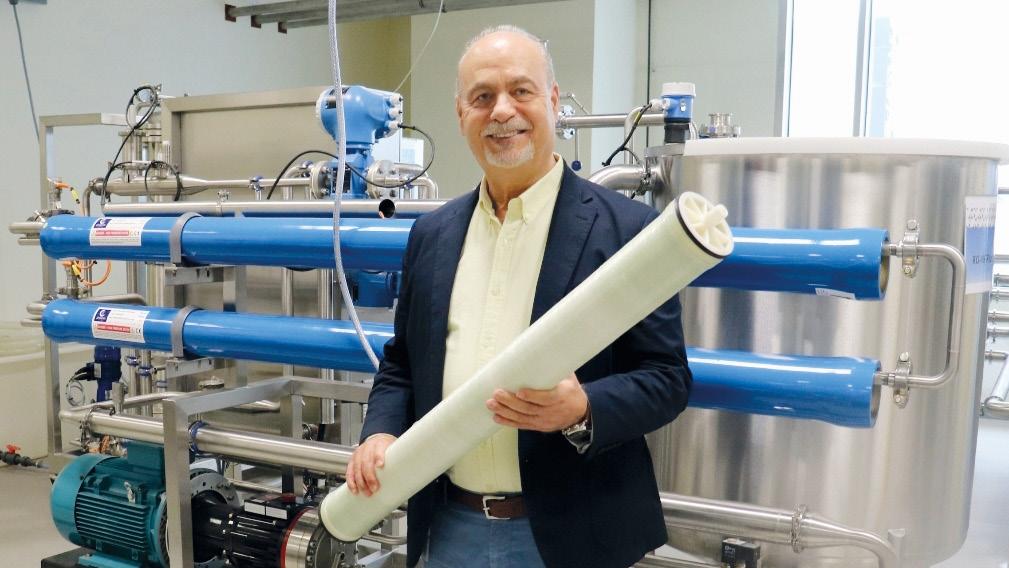
even trace metals can be efficiently extracted with the right engineered systems. With rising mineral prices and growing demand, continued innovation in materials and system design could make mineral recovery from brine a compelling part of a sustainable future.
Membrane engineering is central to this transition. Gulf waters are tough on desalination systems; high temperatures, high salinity, and intense biofouling stress conventional RO membranes. Our work focuses on designing membranes that can handle these conditions, including nanomaterial-modified and electrically conductive membranes, as well as 3D-printed integrated membranes that improve performance while reducing fouling. These innovations improve water recovery enable integrated mineral recovery within the same systems, maximizing value from every drop processed.
Equally critical is linking desalination with renewable energy. The path to a sustainable water future is tied to decarbonizing water production, and renewables can help get us there. Solar and wind can power desalination, while hybrid systems coupling PV-powered RO with battery storage can build resilient, low-carbon water supplies. The Al Taweelah Desalination Plant in Abu Dhabi is a prime example, with a capacity of around 909,000 m3/day, powered partly by solar energy supplying 30.0% of its electricity (with plans to increase to 55.0%). It operates at just 2.81 kWh/m3 with water costs of $0.49/m3, illustrating how renewables and desalination can work together to cut emissions while securing water supplies.
But let’s be clear: technology alone won’t drive this transformation. Regulatory frameworks need to evolve to treat brine as a resource,
not waste, and establish clear guidelines for mineral ownership and incentives for recovery. Governments can accelerate progress by funding research and supporting pilot programs that bridge the gap between lab-scale success and industrial deployment. Developing markets for recovered minerals can attract private investment, transforming desalination plants into integrated water and resource recovery hubs.
Infrastructure also plays a critical role. Investments in centralized brine processing facilities and dedicated pipelines could enable efficient brine transport, fostering industrial symbiosis where waste from one facility becomes feedstock for another. This ecosystem approach, driven by visionary policies and strategic investment, can turn brine from an environmental liability into a cornerstone of water, mineral, and energy resilience.
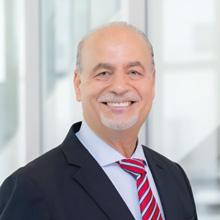
About the Author
Professor Nidal Hilal is Professor of Engineering at NYU Abu Dhabi, Director of the NYUAD Water Research Center, and a Global Network Professor of Chemical Engineering at NYU Tandon. A Chartered Engineer (UK) and Fellow of multiple prestigious institutions, he holds a PhD from Swansea University and a DSc from the University of Wales for outstanding contributions to water processing, desalination, and membrane science. He has authored over 600 publications, supervised 46 PhDs and 70+ postdoctoral fellows, and pioneered breakthroughs such as self-cleaning
The vision is clear: brine as a feedstock, not a waste stream. By recovering valuable minerals, advancing membranes for challenging conditions, and embedding renewables into desalination, we can close the loop in water and resource management. This transition requires a blend of science, engineering innovation, and forward-thinking policy to ensure desalination becomes a driver of environmental sustainability and economic opportunity.
We are optimistic. The technologies are emerging and the environmental imperative is urgent. With strategic support, brine can become a key pillar in the circular water economy that the Gulf and the world need. It’s time to reimagine desalination not as an end point, but as a gateway to water security, mineral supply, and climate resilience.

membranes, composite imprinted membranes, and the UAE’s first industrial-scale RO module. Recognized globally, he has received major honors including the Kuwait Prize (2005), Menelaus Medal (2020), and the GPID Global Prize for Innovation in Desalination (2024), and is ranked among the world’s top 10 desalination leaders and a Highly Cited Researcher (2022, 2024). His research, spanning nano-water, membrane technology, and advanced water treatment, has shaped modern desalination and water reuse, and he serves on editorial boards and advisory panels worldwide.
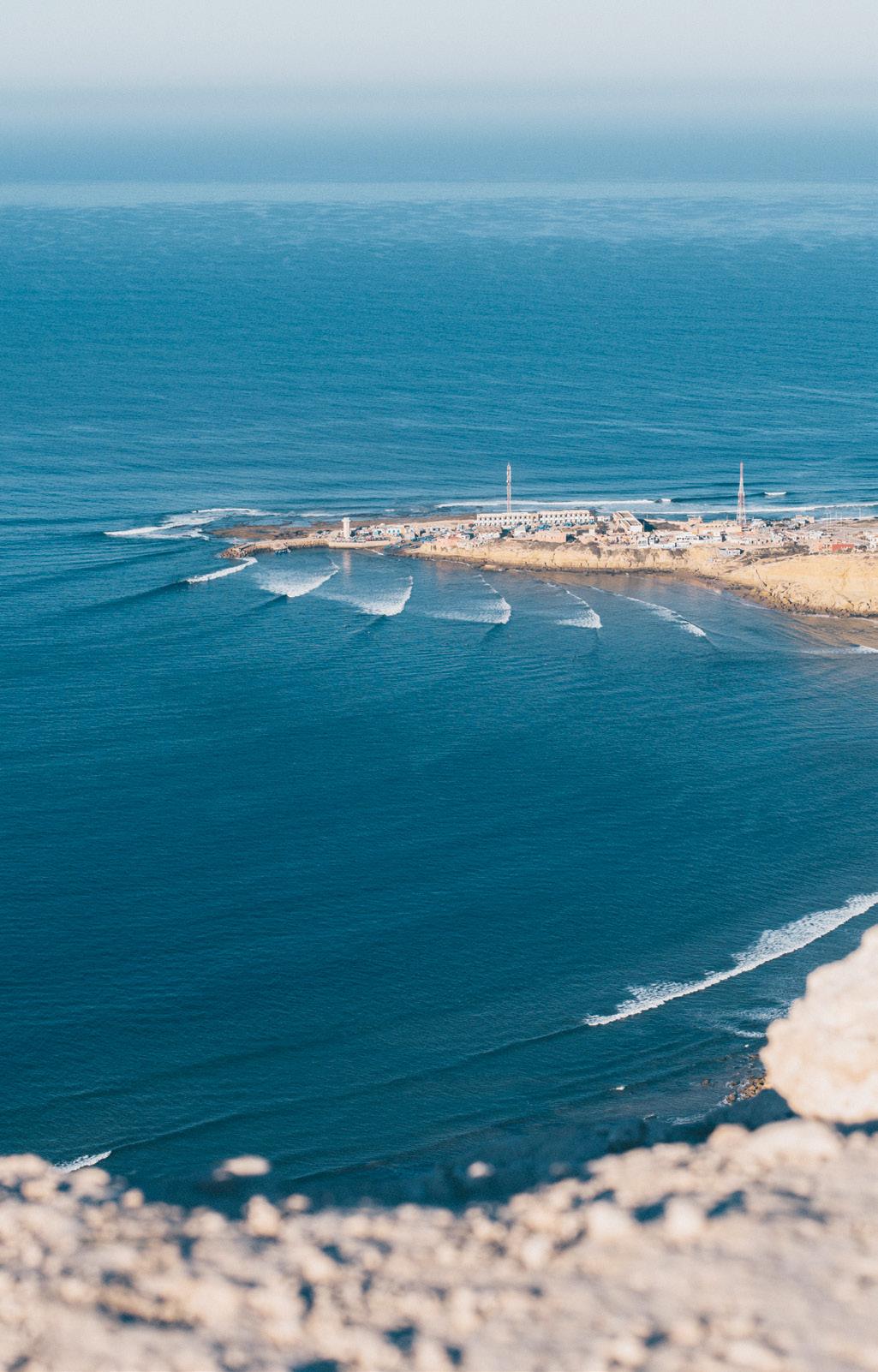
EXECUTIVE VIEWPOINT
INNOVATION IS ROOTED IN COLLABORATION: WHAT WE
OWE EACH OTHER IS THE WATER
By Naoll Mary, International Water Finance Expert, IDRA Board Member
“In modern societies we do not live self-sufficient lives. We owe our quality of life to a web of mutual dependence.”
Minouche Shafik, What We Owe Each Other
Water, the foundation of life, is increasingly at the center of one of the most pressing global challenges of our time. In the face of population growth, urban expansion, and climate change, our ability to secure water for all will depend not only on technology, but on a renewed commitment to mutual responsibility — to what we owe each other.
This ethic of collaboration is precisely what inspired the creation of the International Desalination and Reuse Association (IDRA) 50 years ago, and the work of its members ever since. When our founding members came together, they did so with a shared vision: to advance the development of desalination and water reuse technologies as essential components of global water security. They understood early on that this mission would require more than the brilliance of individual actors — it would require trust, dialogue, and cooperation across sectors, borders, and disciplines.
And it worked. Over the past decades, technological innovation in desalination and reuse has accelerated, thanks to this spirit of collaboration. Reverse osmosis membranes have become more efficient, dramatically reducing energy consumption. The integration
the members of IDRA, together with our partner organizations, bring practical experience, expertise, and a knowledge base that fuel new innovations.
of renewable energy sources has become viable. Breakthroughs in materials science, brine management, digital optimization, and circular water systems have all emerged from a growing ecosystem of engineers, researchers, utilities, and companies who have learned that progress accelerates when we share.
Yet technology is only one part of the puzzle. As the impacts of climate change intensify, communities around the world — particularly in water-scarce regions — face the growing risk of systemic water insecurity. Here, desalination and reuse are not luxury technologies. They are lifelines. But to scale their impact, we need more than science — we need the policy frameworks and financial mechanisms that can enable implementation at speed and scale.
This is where a new phase of collaboration becomes essential — one that extends beyond the technical community into the broader world of public policy, development finance, and global governance.
Since 2017, IDRA has actively forged partnerships with institutions such as the United Nations, the World Bank, the International Finance Corporation (IFC), and other MDB organizations. These partnerships aim to catalyze innovation in policy and financing — to remove barriers, create incentives, and mobilize the private sector to support the public sector in the deployment of water reuse and desalination infrastructure.
In Une rose au paradis, René Barjavel suggests that imagination is born from reality — put through the grinder and recomposed into new forms. In a similar way, the members of IDRA, together with our partner organizations, bring practical experience, expertise, and a knowledge base that fuel new innovations. These include blended finance solutions, local currency instruments, guarantees, programmatic
approaches, and other tailored financial tools suited to the complexity of water infrastructure.
Private sector participation will be crucial to closing the investment gap in water infrastructure. Public resources alone cannot meet the demand, especially in fast-growing urban areas where needs are rising sharply. With the right policies and financing frameworks in place, we can crowd in capital for resilient water projects, de-risk investments, and deliver services that are reliable, climate-adaptive, and inclusive.
The Kigali
Bulk Water PPP
and the
reuse scheme in Windhoek, Namibia, demonstrate that even in lowand middle-income countries, ambitious projects are possible when institutions and incentives align.
This, too, is innovation — not in a lab, but in how we govern, finance, and collaborate.
Across the world, we already see inspiring examples. In countries like Singapore, Israel, and the UAE, the integration of desalination and reuse into national water strategies has proven transformative. In places like Morocco, Chile, and India, large-scale desalination and reuse projects — often in partnership with the private sector —
are improving both water and food security. The Kigali Bulk Water PPP and the reuse scheme in Windhoek, Namibia, demonstrate that even in low- and middle-income countries, ambitious projects are possible when institutions and incentives align.
At IDRA, we believe that scaling such success stories requires a global effort: knowledge-sharing, capacity-building, and smart finance brought together by a unifying goal — water for all.
The clock is ticking. SDG 6 — to ensure availability and sustainable management of water and sanitation for all — is off track. The climate crisis is not waiting. But neither are we. As an association of members spanning industry, academia, public authorities, and
financial institutions, we are more committed than ever to accelerating solutions — not alone, but together.
We must move forward with both humility and ambition: humility to recognize that no single actor holds all the answers, and ambition to build coalitions that can match the scale of the challenge ahead.
As Minouche Shafik reminds us, our lives are bound together by interdependence. And in this era of water stress and climate volatility, that truth is more visible than ever. We owe each other infrastructure that works, policies that protect, technologies that endure, and partnerships that include.
Above all, what we owe each other is the water.

About the Author
By Naoll Mary is a Water and Environment specialist with 30 years of experience in senior positions at global private water utilities and financing institutions. He has had extensive collaboration with a wide network of infrastructure services stakeholders and financing entities and has led and participated in the development of several significant bulk water contracts, desalination, and reuse projects.
He has joined in 2020 the Infrastructure Pre-Investment Unit at the IFC, participating in the early development of
water projects with private sponsors, and the development and implementation of the strategic activities of the World Bank Group related to water security, climate adaptation and mitigation initiatives for Water Utilities, bulk water treatment and Reuse. He holds a degree in engineering from the French National School for Water and Environmental Engineering (ENGEES) and has further training in International Finance (CNAM) and Environmental Economics (UM).
Celebrating a Legacy of Impact:

The
Career of Professor John H. Lienhard V
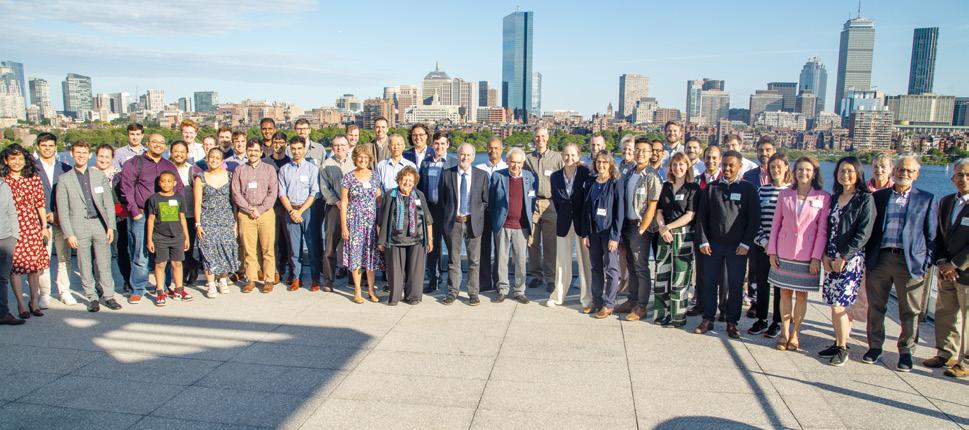
On June 27, 2025, more than sixty friends, colleagues, former students, and family members of Professor John H. Lienhard V gathered at MIT’s Samberg Conference Center to honor a career that has profoundly shaped the fields of heat transfer, desalination, and the global water-energy-food nexus.
Held high above the Charles River with views of the Boston skyline, the Lienhard Career Celebration Symposium brought together a vibrant community that spanned continents and generations. In one tightly scheduled day, 26 speakers shared reflections on John’s influence not only as a scientist and educator but also as a mentor, collaborator, and visionary leader.
A Global Gathering
Attendees traveled from across the United States, Barcelona, Dublin, and Montreal. Others joined virtually, with video tributes from Singapore, India, Germany, Canada,
Idaho Falls, and Washington, D.C. The diversity of voices underscored the truly global reach of John’s work.
The day began with a session on water and industry, spotlighting the real-world applications of innovations from the Lienhard Lab. Quantum Wei, CEO of Harmony Desalting, traced the commercial evolution of batch reverse osmosis technology. David Warsinger, now a professor at Purdue University, explored how membrane technologies emerging from John’s lab are being applied to air quality, metal recovery, and water treatment. Ronan McGovern highlighted the industrial impact of membrane design research grounded in John’s rigorous yet practical approach to fluid mechanics.
Mentorship That Transcends Time
Speakers from all stages of John’s mentorship journey shared personal reflections. Early
Ph.D. students Kurt Roth and Andreas Pfahnl described how John’s systems-thinking approach helped shape their leadership paths, one in research at Fraunhofer USA and the other in a multifaceted technical and executive career.
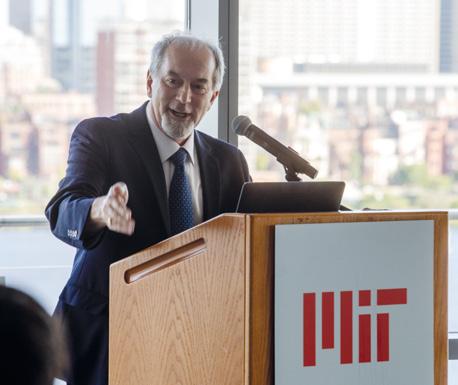
At lunch, moving video tributes revealed the global ripple effects of John’s mentorship. Prakash Govindan, co-founder of Gradiant, recalled how John’s belief in real-world innovation helped launch the first unicorn in the water sector. Anand Plappally spoke from Jodhpur about building a lab focused on India’s water challenges. Aaron Wilson credited a thoughtful review from John as the start of a transformative collaboration. Wilko Rohlfs from RWTH Aachen demonstrated interactive heat transfer teaching tools inspired by John’s influence.
A Scholar and Teacher
The afternoon sessions turned to heat transfer and the thermal sciences. Leon Glicksman
reflected on coauthoring a foundational textbook with John and redesigning how thermal systems are taught. Professor emeritus Borivoje Mikic and Gang Chen highlighted John’s rigor, openness, and commitment to cultivating debate and scientific curiosity.
Innovative teaching methods took the stage with Emily Tow’s demonstration of tactile learning, and Kyle McKee’s joint work with John on heat transfer shape factors. Audio remarks from Mostafa Elsharqawy added further depth.
In a showcase of rising scholars, recent students including Sam Heath, Andrew Bouma, and Danyal Rehman presented research on hydrogen production, carbon capture, and generative AI. Each credited John’s guidance in marrying theoretical insight with real-world relevance.
Institutional Impact and International Reach
In a panel on institutional leadership and global collaboration, Cristina Amon spoke on advanced design tools for thermal systems, while Ahmed Ghoniem presented on clean hydrogen. Georg Schuecking discussed his water policy work at the United Nations, while Jonathan Bessette and Elena Guillen-Burrieza described John’s role in creating meaningful international research partnerships through the Abdul Latif Jameel Water and Food Systems Lab and the Masdar Institute.
Faculty collaborators offered powerful tributes. Amos Winter spoke about how John’s advocacy elevated applied mechanical design. Evelyn Wang, now MIT’s vice president for climate, shared a video message thanking John for championing her team. Rohit Karnik, current J-WAFS director, gave a personal account of the creative freedom John offered that helped reshape the membrane research landscape.
A Fitting Tribute
The day concluded with a keynote address by Professor Lienhard. With humility and clarity, he reflected on the early mentors who shaped his path, the importance of values in research, and the joy of working alongside brilliant colleagues and students. It was a portrait of a scholar guided by intellectual discipline, empathy, and service to others.
John’s wife, Theresa Kavanaugh, a distinguished patent attorney and senior partner, and their son, Jasper Lienhard, a materials scientist and cofounder of Foundation Alloy, were present throughout the day. Their visible support served as a reminder of the strong foundation behind John’s lifelong achievements.
One of the most poignant moments came during the evening reception, when a poem by Shannon McCarthy, secretary general of the International Desalination and Reuse Association (IDRA), was read aloud by a group of John’s former students. A longtime IDRA
board member, John’s global impact on the desalination field was felt not just in the room but around the world.
A Legacy That Lives On
From his foundational role in revitalizing MIT’s Rohsenow Kendall Heat Transfer Laboratory to launching the Center for Clean Water and Energy and J-WAFS, John H. Lienhard’s work has touched nearly every corner of the water-energy nexus. His influence lives on in the technologies, papers, and institutions he helped shape, but more enduring still is the community of people he mentored and inspired.
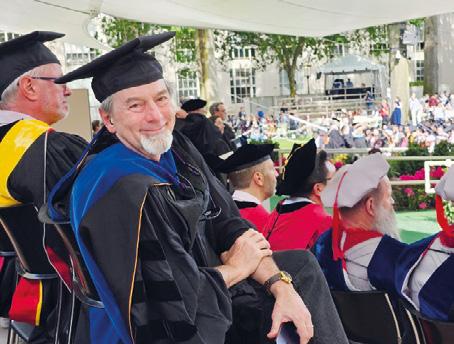
The symposium was organized by Akshay Deshmukh, a research scientist in the Lienhard Group, and David Warsinger, a former student and now faculty member at Purdue, along with Theresa Kavanaugh and Gang Chen. Together, they created a fitting celebration of a career built not just on academic achievement but on a steadfast commitment to solving real problems and nurturing the people who will carry that mission forward.
ENOWA NEOM Leads the Way in Brine Valorization and Circular Water Innovation
NEOM, the visionary economic zone in northwest Saudi Arabia, is emerging as a global leader in sustainable water innovation. As part of the Kingdom’s Vision 2030, NEOM’s utility provider ENOWA has launched the Water Innovation Center (WIC) - a hub advancing technologies in desalination, water reuse, and zero liquid discharge (ZLD).
At the core of WIC’s work is brine valorization— transforming desalination waste into commercially valuable minerals. Using proprietary selective reverse osmosis (RO) membranes and membrane crystallization systems , WIC enables the recovery of high-purity minerals such as lithium, magnesium, potassium, and sodium directly from seawater. These membrane-based systems deliver significantly lower energy use and carbon emissions compared to conventional thermal or chemical extraction methods.
In June 2024, ENOWA commissioned a 1,200 m³/day demonstration plant at its Duba SWRO facility, marking a milestone
in scalable brine valorization. The system’s modular design allows membrane configurations to be adjusted in response to market demand—offering both technical flexibility and commercial viability.
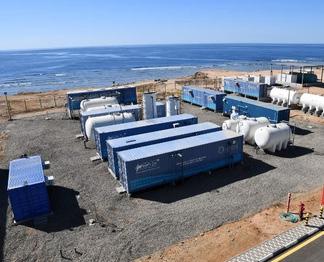
WIC has also developed brine-enhanced 3D-printedconcrete that replaces freshwater with desalination brineas mixing water, combined with supplementarycementitious materials like ground granulated blast-furnace slag (GGBS). This approach reduces CO2emissions by over 190 kg per cubic meter and enhancesconcrete properties. Early applications include reefrestoration
structures in the Red Sea, demonstrating itsenvironmental and industrial benefits.
WIC’s innovations have received widespread industryrecognition. In 2024, the center received the IDRAEnvironmental and Sustainability Award, the GlobalInnovation Prize in Desalination from Saudi Arabia’sMinistry of Environment, Water and Agriculture, and theMENA Construction Innovation Award. Additionally, itsecured second place in the Mohammed bin Rashid AlMaktoum Global Water Award for its membranecrystallization technology.
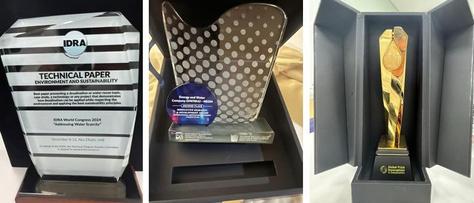
These accolades affirm WIC’s leadership in practical,scalable, and low-impact desalination and brine reusetechnologies. Its solutions support water-scarce regionsand industrial applications, while advancing the principlesof the circular economy.
By converting brine from a disposal challenge into a valuable resource stream, NEOM is setting a new global benchmark for sustainable, next-generation water infrastructure.
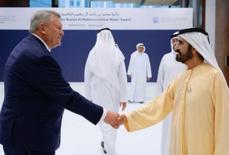
About us

NEOM’s ENOWA Water Innovation Center is driving industry-leading innovation in brine valorization. Through proprietary membrane technologies, WIC enables low-energy recovery of high-value minerals from desalination brine. Its demonstration plant and brine-enhanced concrete applications reflect NEOM’s commitment to circular, sustainable solutions for positioning it as a global model for next-generation water reuse and ZLD strategies.
IDRA HIGH-LEVEL SEVILLE COLLOQUIUM ON RESILIENT WATER SOLUTIONS
By Cristina Novo, Smart Water Magazine
Water leaders gathered at the IDRA High-Level Seville Colloquium on Resilient Water Solutions to address the global water crisis, showcasing innovative reuse, desalination, and circular economy solutions. Experts from Europe, North Africa, the U.S., and Latin America shared regulatory breakthroughs, public-private partnerships, and resilient governance models.

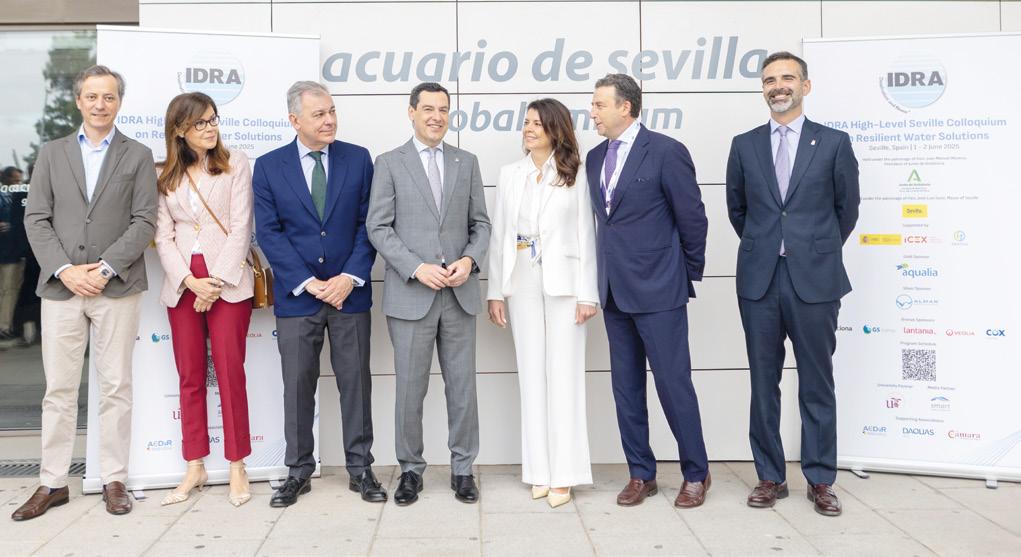
On June 2, 2025, the IDRA High-Level Seville Colloquium on Resilient Water Solutions convened an international assembly of government officials, policy experts, busi-
ness leaders, academics, and technical practitioners at the Sevilla Aquarium. The event served as a platform for participants to address escalating water scarcity driven by
climate change and to propose actionable pathways for resilient water governance worldwide. Throughout the full day of dialogue, participants exchanged exper-
tise on advancing water reuse, desalination, integrated governance, circular economy strategies, and cross-sector partnerships.
Shannon McCarthy, Secretary General of IDRA, welcomed delegates to Seville and framed the day’s discussions as part of a broader journey toward a more sustainable and secure water future. She praised Andalusia as a living example of forward-thinking water policy and noted that the colloquium laid the groundwork for even more ambitious gatherings in the years ahead, culminating in the IDRA 2027 Global Summit on Water and Climate Change, set to return to Seville. Her words emphasised the global importance of local leadership and the need for collaboration across technical, policy, and financial sectors.
Mayor José Luis Sanz Ruiz of Seville emphasised his city’s sustained commitment to embedding sustainability within urban water management and infrastructure, describing Seville as a "living laboratory" for integrated water governance that balances population growth, tourism, and environmental protection. President Juan Manuel Moreno Bonilla of the Junta de Andalucía framed water as an existential issue for Andalusia, stressing the need for desalination and reuse to become central pillars of both regional strategy and European policy. His remarks included a strong call for EU-level recognition of water as a strategic resource and an acknowledgement of the infrastructure and funding challenges ahead.
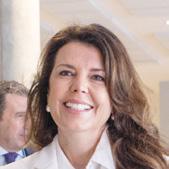
Shannon McCarthy
Secretary General, IDRA
“Our mission at IDRA is to connect people and promote water solutions through innovation and international collaboration.”
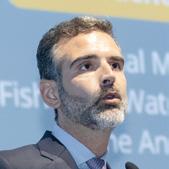
Ramón FernándezPacheco Monterreal
Expanding on the regional strategy, Ramón Fernández-Pacheco, Regional Minister for Agriculture, Fisheries, Water, and Rural Development, outlined the Andalusian roadmap for non-conventional water resources. He presented specific targets for water reuse and desalination by 2027 and underscored the importance of public-private partnerships, adaptive governance, and territorial equity to ensure all regions of Andalusia benefit from resilient infrastructure.
Regional Minister for Agriculture, Fisheries, Water and Rural Development of the Andalusian Government, Spain
“We have gone from recycling 17 cubic hectometres of water in 2019 to 70 today. Our goal is to multiply that by ten by 2027.”

Carlos Cosín
CEO, Almar Water Solutions
“Desalination has developed faster than reuse, even though reuse is cheaper and easier; now the situation is changing.”
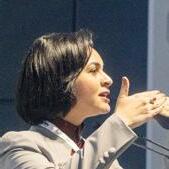
Nouran Elbadawi
Advisor to the Minister for Desalination and Wastewater Treatment, Ministry of Water Resources and Irrigation, Egypt
"Egypt recycles 21 billion cubic meters annually, becoming one of the world’s leading countries in agricultural wastewater reuse."
Carlos Cosín, CEO of Almar Water Solutions, offered a private-sector perspective grounded in decades of international experience. He stressed the urgency of enabling regulatory frameworks that foster public-private collaboration and warned that without strong planning, even the best technologies would fall short. His brief but impactful remarks served as a call to action, pointing to Andalusia as a model for integrated and long-term water planning.
Andalusia’s Strategic Plan: shaping the region’s water future
The colloquium’s first thematic session, moderated by Juan Francisco Muñoz, Deputy Director of Planning at the Andalusian General Secretariat of Water, explored the operational realities of Andalusia’s resilience strategy. Muñoz stressed that Andalusia’s plan is not simply reactive to immediate droughts but constitutes a structural transformation designed for enduring resilience, engaging ministries, basin authorities, municipalities, farmers, and utilities alike.

Juan José Denis, President of EMASA and ASA Andalucía, argued that water reuse is not theoretical but operationally proven, citing successful long-term projects across Spain. He proposed a target of 100% reclamation of urban wastewater. Using a motorsport analogy, Denis likened utility operators to drivers who must confidently manoeuvre sophisticated systems under complex and variable conditions to ensure effective operation.
The President of the Axarquía irrigation users’ association, José Campos, spoke from the perspective of one of Andalu-

Participants in panel
sia’s most vulnerable agricultural zones. Initially adopted as an emergency solution, water reuse has now become an essential, permanent fixture for safeguarding avocado and mango crops. Campos highlighted the importance of improving conductivity levels by blending reused and conventional water sources to protect delicate crop quality while ensuring the longterm survival of these economically vital crops.
Ulises Ameyugo, Deputy Director of Health Protection at the Andalusian Ministry of Health, stressed that public
confidence hinges on stringent safety standards and transparent governance. He called for robust institutional coordination, proactive monitoring, and clear public health protocols to build trust in non-conventional water resources, noting that health authorities must be allies, not barriers, in scaling up reuse.
Building resilience in North Africa: water success stories
Moderated by Shannon McCarthy, the North Africa session spotlighted how Morocco, Algeria, Egypt, and

Ferdaous Ben Atig
Public Service Advisor, Instance
Générale de Partenariat Public Privé, Tunisia
"Tunisia’s new Water Code reforms water governance and introduces public-private partnerships for the management of water resources."

Tarik Hamane
Group CEO, National Office of Electricity and Drinking Water (ONEE), Morocco
“Public-private partnerships are helping to finance large-scale desalination plants, securing a reliable long-term supply for both cities and farms.”
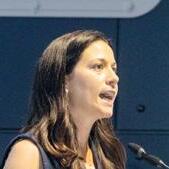
Tunisia are aggressively scaling desalination, reuse, and integrated planning to address intensifying water stress and scarcity.
Partner and Director of Government Affairs, BBK Law Firm, U.S.
"In the United States, public acceptance remains a major barrier to expanding potable reuse, despite safe and proven technologies."
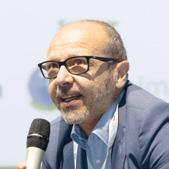
Ana Schwab Giampiero Genovese
Head of Unit, Joint Research Centre (JRC), European Commission
"The Water Resilience Strategy will set as its objective the sustainable use of water, the importance of recycling, and the circular economy."
Tarik Hamane, CEO of Morocco's National Office of Electricity and Drinking Water (ONEE), presented a comprehensive vision of how the country is turning structural water stress into an opportunity for transformation. Morocco is aggressively expanding its desalination capacity as a cornerstone of national water security, supported by the National Drinking Water Supply and Irrigation Program (2020–2027), which channels over $14.5 billion in investment. He highlighted the Casablanca megaproject, a facility that will produce 300 million cubic metres annually, powered entirely by renewable energy. Beyond technical expansion, Hamane stressed that Morocco’s strategy is deeply integrated, linking desalination with renewable energy, agricultural development, and territorial equity.
Continuing the regional journey, Bada Lahcene, President Director General of the Algerian Energy Company, described Algeria's rapid expansion from 11 desalination plants in 2020 to mega-facilities capable of meeting 60% of national drinking water needs by 2030. All construction is being carried out by domestic companies, signalling Algeria’s growing industrial and technical self-reliance.
Next, Nouran Elbadawi, Advisor to Egypt’s Minister of Water Resources and Irrigation, shifted the focus to reuse. Egypt, she explained, is not only maximising the reuse of treated agricultural drainage water but also investing in advanced systems that blend reuse with desalination. Elbadawi emphasised Egypt’s leadership in linking water reuse to renewable energy and climate-smart agriculture. She introduced the Renewable Energy Powered Desalination for Irrigation project—a cross-country initiative with Morocco, Tunisia, and Jordan—focused
on the use of desalination for irrigation, powered by renewable energy.
Closing the session, Ferdaous
Ben Atig from Tunisia’s Instance Générale de Partenariat Public Privé described the reforms underpinning Tunisia’s water strategy, including modernisation of the national Water Code and expanded use of public-private partnerships. She highlighted key upgrades underway in desalination and wastewater treatment infrastructure, underlining that for small and medium-sized countries, financing mechanisms must be agile, transparent, and scalable.
How the U.S. is scaling water reuse
Ana Schwab, Partner and Director of Government Affairs at BBK Law firm, provided an in-depth look into the evolving landscape of water reuse policy in the United States. Framing her presentation within the country’s shifting political climate, she described how changes under successive administra-
tions have impacted permitting, grant approvals, and infrastructure investment. Schwab highlighted that while there is growing interest in reuse, development has slowed due to regulatory uncertainty, the absence of a unified federal policy, and public hesitancy toward technologies like potable reuse. Regional disparities also play a significant role: while states like California, Texas, and Arizona are advancing innovation, others remain under-invested due to more abundant freshwater resources or slower policy uptake.
Schwab highlighted the importance of demonstration projects and public education in increasing acceptance of reuse and discussed the growing attention to PFAS contamination and its implications for liability, investment, and regulatory thresholds. Her talk offered international participants a nuanced understanding of how legal, political, and technical factors intersect in shaping the future of water reuse in the U.S.
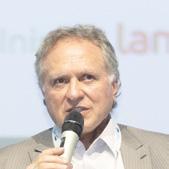
Anatalicio Risden
Business Development Director, Sanepar
“At Sanepar we are working to convince industries that reused water is safe and offers excellent opportunities for new business.”
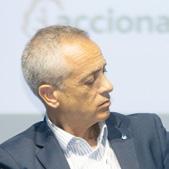
José Luis Murillo Collado
CEO, Esval S.A.
“Chile’s model has transparent, unified tariffs; incorporating desalination increases costs that must be reflected in the water bill.”
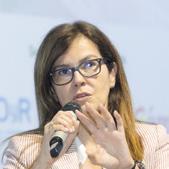
Marta Verde
CEO, GS Inima
“Brazil has an excellent regulatory framework; the concession system gives investors clear rules and risk protections for reuse.”
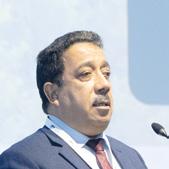
Bada Lahcene
President Director General of the Algerian Energy Company
“By 2030, desalinated water will cover 60% of Algeria’s drinking water needs, thanks to plants built by Algerian companies.”
Panel 1: From policy to practice –
advancing water reuse under EU
regulations
Carlos Cosín moderated a panel addressing evolving EU policy frameworks for reuse, noting the historical paradox: while reuse is often cheaper and more accessible than desalination, its uptake in Europe has lagged. Giampiero Genovese, Head of Unit at the Joint Research Centre (JRC) of the European Commission, provided an overview of the EU regulatory landscape: the Water Resilience Strategy, the Water Reuse Regulation and the recently revised Urban Wastewater Treatment Directive. Genovese explai-
ned the importance of harmonised risk management, and the need to overcome uneven progress across EU member states. He concluded by calling for broader public acceptance, better data availability, and economic incentives to accelerate reuse adoption across sectors beyond agriculture.
Eduardo Orteu, Counsel at Gómez-Acebo & Pombo in Spain, reviewed Spain’s long-standing regulatory barriers, including fragmented jurisdiction, pricing distortions, and restrictive PPP frameworks. Recent reforms aligned with EU directives now offer new openings for
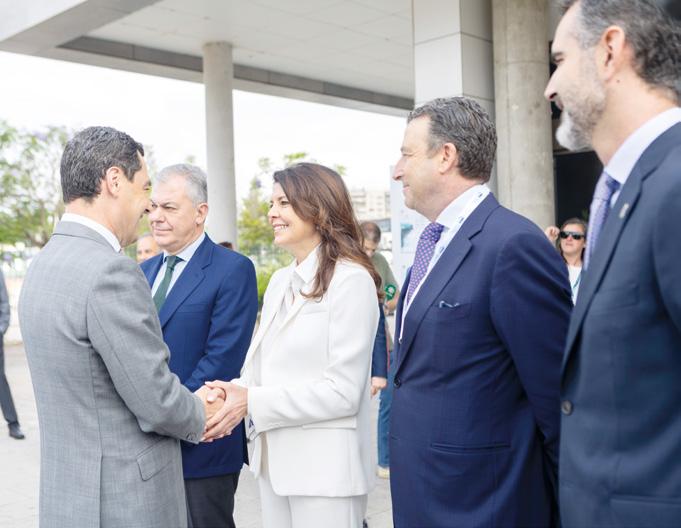
private capital investment.
Federico Ramos de Armas, Director of Veolia Madrid Agua, emphasized the need for reliable data, multi-level governance reform, and updated legal frameworks. Fragmented governance had historically hindered coordinated planning, but EU-funded digitalisation efforts are now bridging information gaps. Jesús Maza, President of DAQUAS, provided a utility perspective based on Seville’s evolution. Past reliance on groundwater during droughts exposed vulnerabilities that modern reuse programs, aligned with EU law, are now addressing to ensure water security.
Panel 2: Scaling water reuse for agriculture –Spain’s success story
Moderated by Pedro Almagro, CEO of Lantania Water, this session highlighted Spain’s leadership in agricultural reuse. Victor-Juan Cifuentes, Planning Director at the Guadalquivir River Basin Authority explained that with 90% of water already allocated to agriculture,
reuse operates as a substitution tool requiring basin-specific governance and legal precision to avoid environmental harm.
Bringing an industry and innovation lens, Domingo Zarzo, Head of Strategic Projects and Institutional Relations at Sacyr Water, underlined Spain’s position as the European leader in reuse capacity. He estimated Spain must double its reuse share by 2027. He addressed challenges such as regulatory fragmentation, public perception, salinity, and contaminants of emerging concern like PFAS. For him, the priority is now less about new technology and more about scaling proven solutions sustainably and affordably. Antonio José Lara Zamora, Water COO at Cox Water stressed that national reuse strategies must reflect Spain’s climatic diversity and regional needs. Spain’s Royal Decree 1085/2024 introduces much-needed regulatory clarity, quality standards, and streamlined licensing procedures, opening new pathways for accelerated adoption.
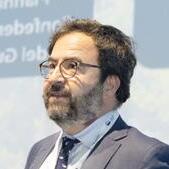
Pedro Almagro
CEO of Lantania Water
“Spain is among the most advanced countries in reclaimed water use for irrigation, but there is still much to do.”
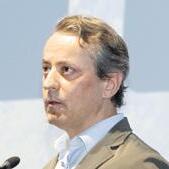
José Díaz Caneja
CEO, ACCIONA Infraestructuras
“Latin America is not defined by scarcity, but by a growing need for sanitation and reuse to ensure resilient supply.”

Rafael M. Rodríguez
Business Development Director, Cox Water
“Mining companies in Chile and Peru now require zero-liquid discharge solutions to meet stricter environmental permit conditions.”

Manuel Romero
CEO, EMASESA, Spain
"In Seville, we have cut daily per capita water consumption from 176 to 106 litres, thanks to public awareness and investments."
Panel 3: turning the tide
– Latin America’s bold approaches to water reuse and desalination
Moderated by Javier Nieto and José Díaz Caneja of ACCIONA, this panel explored Latin America’s emerging regulatory models, PPP frameworks, and private sector engagement. Marta Verde, CEO of GS Inima highlighted Brazil’s robust regulatory framework, noting that it provides legal clarity, risk-sharing mechanisms, and financing instruments— factors that significantly reduce investment risk. She pointed to successful examples of public-private collaboration, especially in industrial reuse, and emphasised that long-term reliability, not just cost, is driving uptake, particularly in regions dependent on water-intensive industries. Next, Anatalicio Risden, Business Development Director at Sanepar, the Paraná State water utility, described their evolving reuse strategy, focused on industrial partnerships and community engagement. Sanepar is actively developing contracts to supply
reclaimed water to industrial users. He underlined the importance of education, transparency, and cross-sector collaboration in building public trust.
José Luis Murillo of Chilean utility Esval S.A. emphasised that human consumption projects are hindered by the political sensitivity surrounding tariff increases, despite clear public support for investments that ensure water security. He called for more open dialogue on who pays for reuse and desalination, framing the issue not just as one of environmental or technical sustainability, but of economic realism and political courage. Concluding the panel, Rafael M. Rodríguez, Business Development Director at Cox Water, emphasized that regulatory tightening, zero liquid discharge requirements, and ESG-driven capital are rapidly transforming water project finance in Chile, Peru, and Mexico. Long-term private concessions are increasingly supplying water to major industries while supporting broader sustainability goals.
Panel 4: Inspiring water solutions – success stories in resilience and sustainability
Moderated by Emilio Fernández Director of the Andalusia Delegation at Aqualia, the final session showcased operational examples of successful circular water management across Spain. Rafael Almohalla from El Ejido, in Almería, described how aquifer protection, wastewater reuse, and highly organized agricultural cooperatives have enabled year-round production of tropical fruits while preserving environmental balance. Juan Carlos Pérez presented the Mar de Alborán desalination plant project in the Cabo de Gata region, also in Almería, producing 60,000 cubic metres daily to irrigate over 3,500 hectares of greenhouses. Innovative energy recovery and advanced filtration systems make the plant financially viable for farmers while reducing environmental impact.
led how the island has balanced surging tourism with aquifer preservation through modernized infrastructure, desalination, and consumption regulation, transforming chronic water scarcity into long-term stability. Manuel Romero, CEO of EMASESA, described Seville’s transition from surface water dependency to diversified, digitalised management including brackish desalination, efficiency programs, and smart monitoring systems that secure supply reliability.
Closing remarks
Afterwards, Carmen Ferrer, Mayor of Santa Eulalia in the island of Ibiza, detai -
Finally, Victor Monsalvo, Head of Eco-efficiency at Aqualia, brought a sharp perspective on the role of technology and circular economy principles in sustainable water management. He presented advanced projects in water regeneration, including nutrient recovery and brine valorisation technologies. His message was that innovation must be scalable, affordable, and aligned with regulatory and environmental goals.
Shannon McCarthy and Carlos Cosín concluded the colloquium by highlighting the extraordinary breadth of technical expertise, institutional collaboration, and political commitment gathered in Seville. McCarthy underscored the importance of continued global dialogue and momentum ahead of IDRA’s 2027 Global Summit. Cosín emphasized that Spain now stands uniquely positioned as a global reference for integrated water resilience solutions, where politics, investment, innovation, and public trust converge.
Three Months to Reykjavik: Rethinking Water
Resilience and Security
in a Changing World
By IDRA Editorial Team In just 100 days the global water community will convene in Reykjavik for the 2025 IDRA Summit on Water and Climate Change to address adaptation a and mitigation. Choosing Iceland for this summit is more than symbolic. As glaciers retreat and hydrological cycles shift, Reykjavik sits at the frontline of a rapidly warming Arctic and a global redefinition of water security.

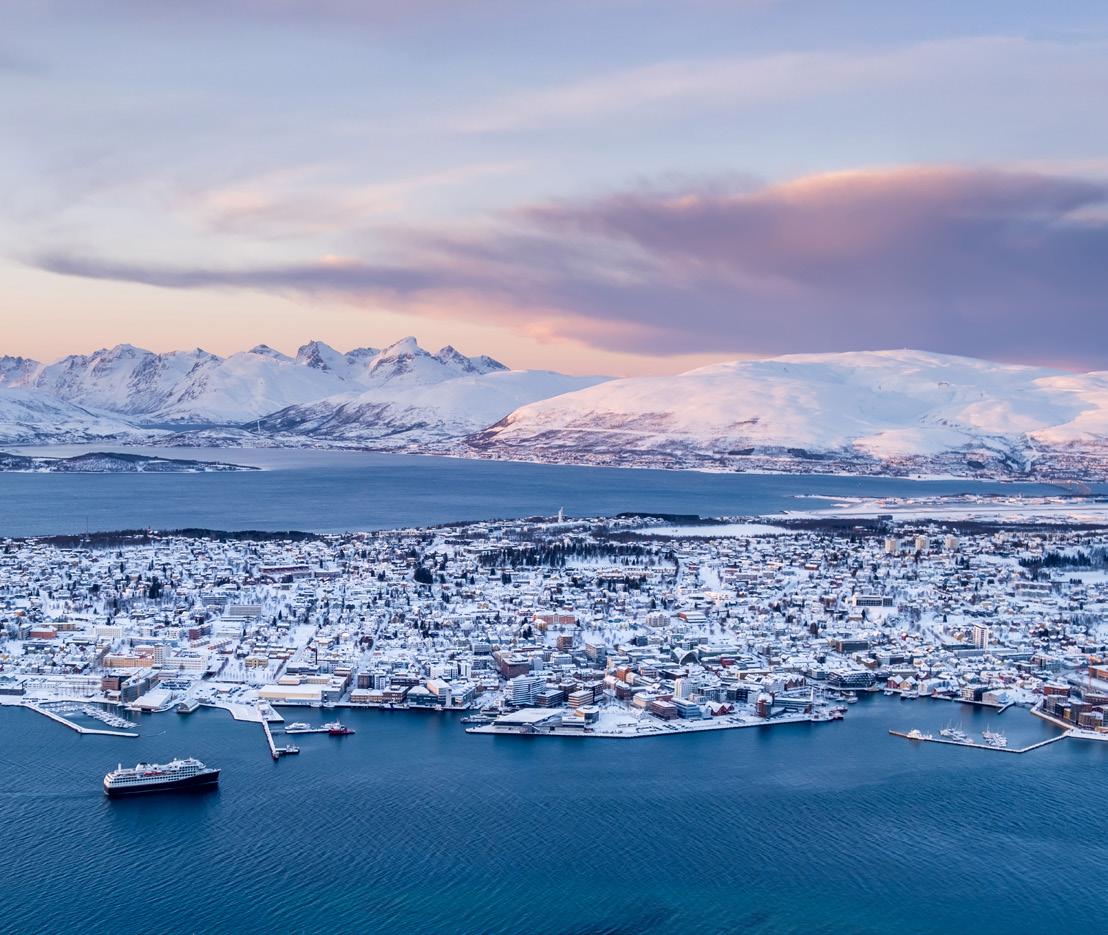
We can no longer deny that our natural world is rapidly changing. Nations that have historically been considered water secure are experiencing climate-driven disruption. Glacier melt, erratic runoff, and precipitation extremes are destabilizing the timing and availability of freshwater supplies. This is not a future scenario. It is happening now.
More than a symbolilc venue, now on the frontline of a rapidly warming arctic, The Reykjavik Summit offers a critical moment to align around solutions that reflect this new reality. For IDRA, that means our global mission to expand the use of sustainable water reuse and desalination as foundational tools for climate adaptation, energy integration and circular water management becomes even more important.
Melting Mountains, Global Consequences
Mountains and glaciers serve as the world’s water towers. According to UNESCO, up to 60 percent of the world’s freshwater originates in mountain regions. More than 2 billion people depend directly on this seasonal runoff for agriculture, energy, drinking water, and sanitation.
However, climate change is rapidly eroding this storage system. In the Hindu Kush mountain range range of central asia, which supplies water to nearly 2 billion people across asia, glacier melt increased 65 percent between 2011 and 2020 compared with the previous decade. The UN’s Economic and Social Commission for Asia and the Pacific (ESCAP) has warned that current melt trajectories will trigger both near-term floods and long-term shortages as glacial mass declines.
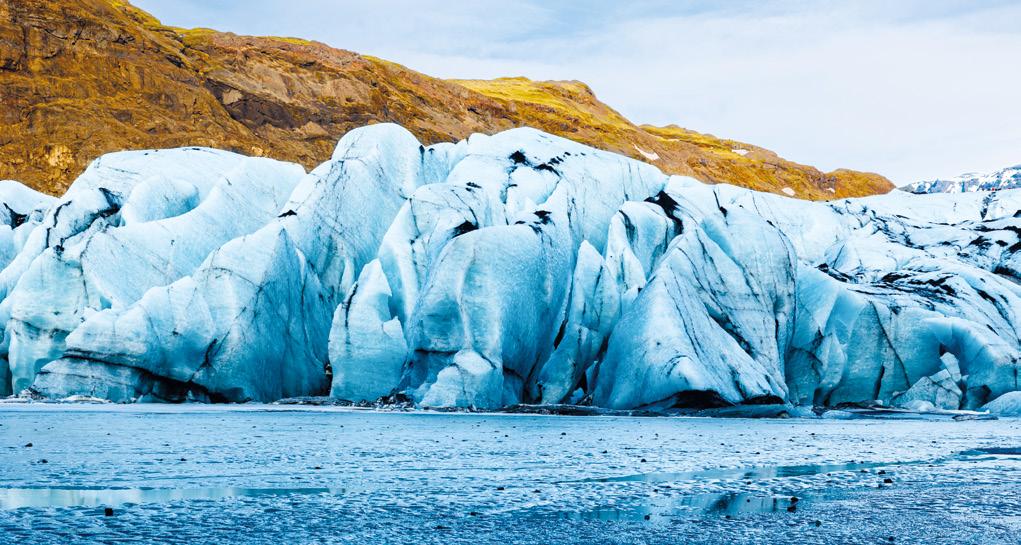
Europe faces similar pressures. Glaciers in the Alps are projected to produce 45 percent less runoff by 2100, resulting in river flows more than one-third lower on average. This decline would directly impact hydropower, irrigation, and municipal supply systems in multiple countries.
In North America, glacier recession is already reducing summer streamflows in Canada and the western United States. Canada’s official glaciology program reports that mountain glaciers serve as drought buffers. As these buffers disappear, the reliability of downstream water systems declines. Meanwhile, in the Colorado River Basin, runoff is occurring earlier in spring, and snowpack volumes are shrinking due to warming temperatures and more rainfall instead of snow.
These trends cut across climate zones and economies. As UNESCO notes, climate change is accelerating glacier melt, decreasing snow cover and thawing permafrost. The result is more variable, uncertain and extreme water flows.
A New Era of Water Risk
All of this means that water security is shifting from a question of volume to one of predictability. According to the Intergovernmental Panel on Climate Change, the frequency and intensity of heavy rainfall events have increased across many regions, while droughts have also become longer and more frequent. The World Bank reports that
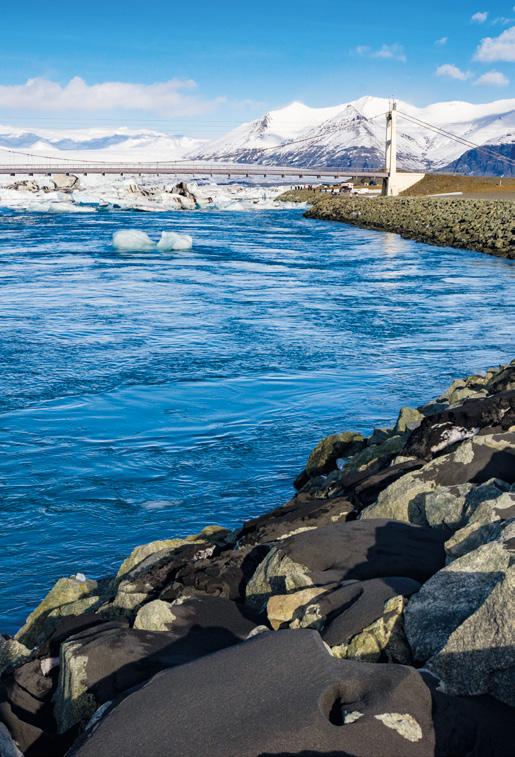
approximately 709 million people now live in areas with increasingly intense rainfall, while another 700 million face longer dry periods.
Traditional infrastructure was not designed for these extremes. Reservoirs, dams and canals were built with assumptions about seasonal water behavior that no longer hold. The most immediate challenge is not scarcity alone but volatility: floods followed by droughts, or long dry spells interrupted by a sudden deluge.
In this new context, adaptation must prioritize flexibility. Governments and water managers need systems that can function during both wet and dry extremes, that store water when it is available, and deliver it when it is not.
The answer is clear: A Strategic Case for Reuse & Desalination
Water reuse and desalination provide precisely this kind of flexibility. Unlike rivers, aquifers or snowmelt, they are not dependent on seasonal variability. They offer reliable, climate-resilient sources of water that can be scaled and integrated into national water portfolios.
greater. With proper regulation, public trust and technology deployment, water reuse can become a mainstream source across sectors. We must work with vigor, and ask ourselveswhat would happen if we could shift from 8% to 80%?
Desalination, especially when powered by renewable energy, has advanced significantly.
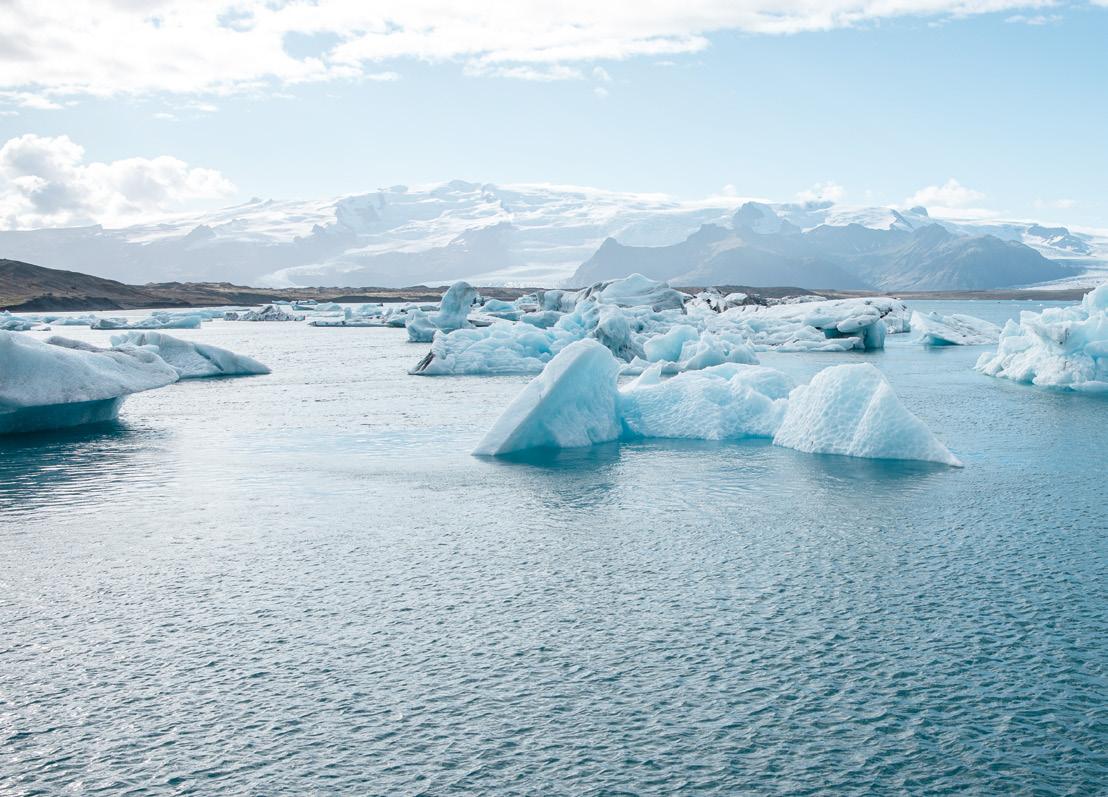
The World Bank has identified desalination and reuse as key tools to close the global water supply gap. Although reuse currently provides only about 8% of total global domestic and industrial water needs, the potential is far
The Reykjavik Summit will highlight carbon-neutral models that align with Iceland’s own hydropower and geothermal grid. By incorporating green energy, as well as managing discharge, desalination can reduce
its environmental impact and serve as a cornerstone of national adaptation strategies.
IDRA sees these technologies as part of a broader shift toward circular water economies. Reuse reduces demand for freshwater, while desalination ensures dependable supply regardless of rainfall. Together, they create a circular water economy, a system where every drop of water has value, and every source can be optimized.
reuse and desalination through innovation, public-private partnerships, and integrated policy frameworks. As a convener, knowledge hub and advocate, we bring together governments, researchers and the private sector to scale up solutions that are both technically and financially sustainable.
Why Reykjavik Matters

The Reykjavik Summit will not only showcase best practices and technological advances. It will also serve as a platform to unite decision-makers around a shared vision: building long-term water resilience in the face of a destabilized climate.
Iceland offers a model. With abundant renewable energy and a strong commitment to sustainability, it shows how water and energy systems can be decarbonized together. The summit will explore how similar approaches can be adapted across geographies.
Over the next 80 days, IDRA will continue working with its global network to elevate investment, advance regulatory innovation, and accelerate the shift toward climate-resilient infrastructure. The tools are ready. The urgency is clear. What remains is the leadership to act.
That is why at IDRA, we are committed to accelerating the adoption of sustainable
As Reykjavik approaches, we invite all stakeholders to join us. Together, we can ensure that the future of water is not only secure, but sustainable. Registration for the IDRA Reykjavik Summit is now open. Register at www.waterandclimatechange.org
The Global Prize for Innovation in Water (GPIW) 2025
Addressing
the Growing
Water Crisis with Innovation
As global water stress continues to rise, innovative solutions are urgently needed to address the escalating challenges of water scarcity, pollution, and management. With 26% of the world’s population living in water-stressed regions, and drought-related disasters increasing by 30% in recent years, the need for breakthrough technologies and strategies has never been more critical. The Global Prize for Innovation in Water (GPIW) 2025 offers a platform for innovators to lead the charge in solving these pressing issues.
What’s at Stake in 2025?
•$100,000 USD for two Grand Prize winners
•$50,000 USD for ten Impact Medal winners Winners will not only receive cash awards but also gain access to pilot programs and business support from the Saudi Water Authority, which is investing $1.8 million in this year’s prize. This unique combination of recognition, financial backing, and ongoing support provides a crucial stepping stone for advancing solutions in water management.
Closing Date: September 14, 2025
The competition is open for applications until September 14, 2025. Solvers, from individual researchers to startups and organizations, are encouraged to submit their ideas to help address the critical need for sustainable water solutions.

How to Apply
To apply for the 2025 GPIW, create an account on the official prize website here and submit your innovative solution. The prize is open to researchers, startups, teams, and organizations working on technologies, business models, or research aimed at solving global water challenges.
Apply now and be part of the innovation that shapes the future of global water security.
For more information and to submit your application, visit the official GPIW website.
Under the theme Driving Global Water
Sustainability Through Innovation, the 21st edition of the IDRA World Congress in 2026 convenes experts, decision-makers, and innovators to showcase the latest technologies, promote sustainable water development, and support global development goals.
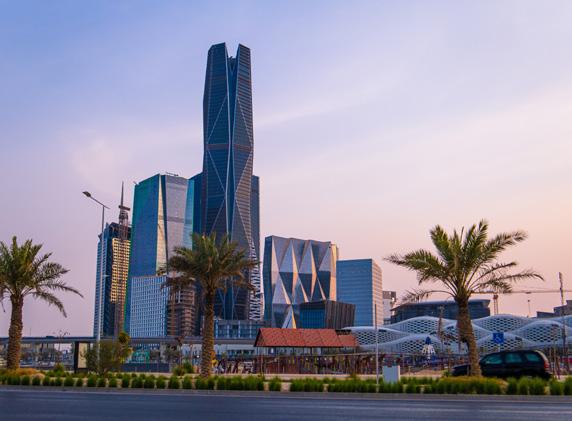




Reuse and Desalination solutions to Adapt to and Mitigate Scarcity

By IDRA Global Connections Editorial Team
Under the Northern Lights: IDRA Reykjavik Summit 2025 Unveils
Thematic and Technical Programs
Under the glow of Iceland’s northern lights, bold ideas are taking shape.
This October 12-14, Reykjavík’s Harpa Concert Hall will welcome ministers, CEOs, engineers, financiers, and innovators from across the globe for the IDRA Reykjavik Summit on Water and Climate Change 2025. Together, they will tackle the intertwined challenges of water scarcity and climate disruption in a rapidly warming world.
Water scarcity stands among the greatest challenges of our time. The Reykjavik Summit is positioned as a catalyst for urgent action and global coordination — a place to accelerate innovation, scale reuse and desalination, and forge the partnerships needed to secure a sustainable water future in the face of mounting climate pressures.
A stage set by IDRA’s Vision
Set against Iceland’s dramatic landscapes, where geothermal power meets receding glaciers, Reykjavik provides a powerful backdrop for action. The summit, in conjunction with the Arctic Circle Assembly, builds upon Iceland’s renowned sustainability leadership and commitment to climate adaptation
Thematic Program: Vision, Policy and Leadership
Over two days, this program shapes the strategic agenda for climate-resilient water systems. Sessions are designed to elevate global leadership in reuse, desalination, and climate adaptation.
Day 1 Highlights:
• Bridging global water narratives –leaders from Iceland, Saudi Arabia, the USA, Senegal, Singapore, Spain and more outline collective priorities.
• Regional spotlights: Scaling reuse and desalination strategies globally and planning for 80% reuse adoption.
• Water and climate at the forefront: In line with the global conversation, these sessions put climate-driven water scarcity and adaptation strategies at the heart of the agenda.
• Include Finance and
Day 2 Focuses on the Future:
• Water stewardship, hyperscalers, and AI: Exploring the tech-led future of water-energy systems.
• Circular economy innovations: From blockchain to material passports.
• Industrial water leadership: Industry’s role in managing the water-energy footprint.
• Hydrogen???
• Policy and capital frameworks: Advanced discussions on unlocking funding and regulatory frameworks.
We are convening the leaders shaping the rules of the game. The Reykjavik Summit will define how we move from aspiration to implementation. View the Preliminary Thematic Program here
Technical Program: Innovation in Practice
Complementing the strategic discussions, the technical track dives deep into hands-on solutions and peer-reviewed research.
Over two intensive days, key offerings include:
• Proven and emerging technologies for water security and reuse.
• Advances in membranes, brine valorization (ZLD/MLD), and water-energy integration.
• AI and digital monitoring for smarter, localized water systems.
• Real-world case studies spanning municipal, industrial, and agricultural sectors.
View the Preliminary Technical Program Here
Why Reykjavik is so important to
Climate
Adaptation and Mitigation
Right now, Reykjavik matters more than ever. The intensification of the global water cycle, manifesting as more frequent extremes, shifting precipitation patterns, and glacier retreat, underscores the urgency of action .
With glaciers in Iceland receding at historic rates, the summit focuses on adaptation and mitigation strategies that are both urgent and universally applicable.
Who Should Attend:
• Utility leaders and engineers
• Policymakers and regulators
• Researchers and innovators
• Developers, financiers
• Industrial sustainability champions
• Bridging Global Water Narratives
• Policy and Capital for Circular Water Solutions
• Scaling Water Reuse from 8% to 80%
• Iceland’s Model for Renewable Energy and Water
• AI, Hyperscalers, and the Water-Energy Nexus
• Hydrogen and Decarbonization

• Decentralized Reuse Panel
• High-Recovery Membranes for Climate Resilience
• Smart Metering and Localized Flow Monitoring
• Circular Industry Water Strategies
• Emerging Research in Advanced Treatment
• Innovation in Desalination and Reuse Systems
Explore full program details and registration:


Thanks to our sponsors
Gold Sponsor

Workshop Sponsor

Innovation

Dinner Sponsors "Beneath the Glacial Veil"

Bronze Sponsors




















IDRA LAUNCHES NEXTWAVE STARTUP PITCH
COMPETITION TO ACCELERATE
INNOVATION IN GLOBAL WATER CRISIS
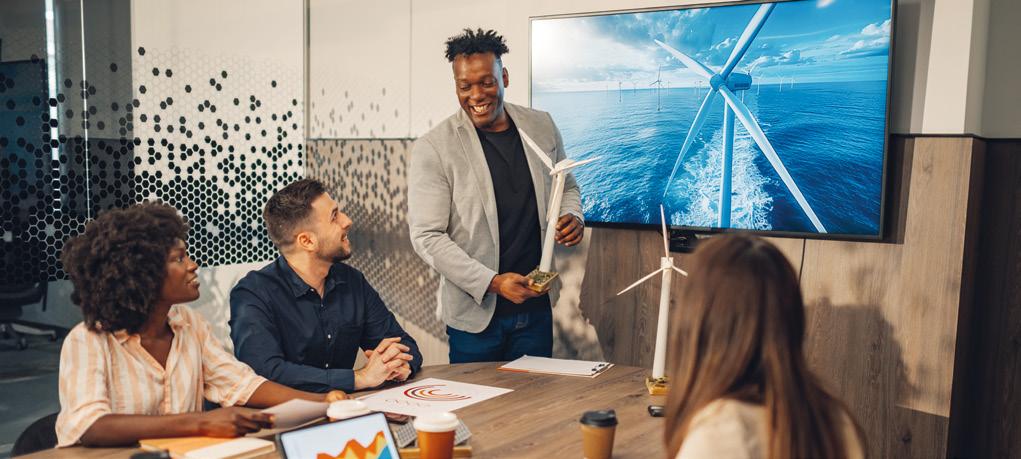
The International Desalination and Reuse Association (IDRA) has launched the NextWave Startup Pitch Competition, a new initiative of its Young Leadership Program (YLP) aimed at empowering early-stage startups addressing the escalating global water crisis. The competition will culminate in a live pitch event during the IDRA Reykjavik Summit on Water and Climate Change, taking place October 12–14, 2025, in Iceland.
With water demand projected to increase by 30% by 2050 and over 2 billion people already lacking safe drinking water, innovation is urgent, not optional. According to World Bank statistics, failure to act could result in up to 6% GDP losses in water-stressed regions. Yet fewer than 10% of water utilities in low- and
middle-income countries adopt advanced technologies.
“The global water crisis demands urgent innovation, and startups are uniquely positioned to deliver transformative solutions,” said Shannon McCarthy, Secretary General–Executive Director of IDRA. “Through the NextWave Pitch Competition, IDRA is creating a platform to connect emerging entrepreneurs with global leaders, funders, and collaborators who can help scale their ideas into real-world impact.”
Targeting Disruptive Water Technologies
The NextWave competition invites pre-Series A startups to submit solutions in five key areas; water treatment, desalination, energy
for or from water, resource recovery from water or water treatment byproducts, and carbon removal from water or treatment systems.
Startups will be evaluated based on several criteria including the relevance of the problem addressed, innovation and technical creativity, scalability potential as well as the strength of business model.
Selected finalists will pitch live at the Reykjavik Summit to a jury of venture capitalists, technology experts, and global water leaders. The winning startup will receive an exhibition booth, passes to the IDRA World Congress in Riyadh, Saudi Arabia, in 2026 as well as access to vital industry contacts at the summit.
Application Timeline and Submission Details
The NextWave Startup Pitch Competition is now open for applications from early-stage innovators around the world. The process is designed to be straightforward and accessible, offering
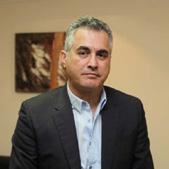

startups a clear path from submission to the global stage.
Finalists will be invited to pitch at a live pitch event in Reykjavik as part of the IDRA Reykjavik Summit, on October 12, 2025.
• Applications Open: July 2, 2025
• Submission Deadline: August 15, 2025
• Finalist Notification: August 25, 2025
Live Pitch Event & Winners Announced: October 12, 2025
To apply, startups must submit a pitch deck along with a brief overview of the problem being addressed, the proposed solution, market context, business strategy, and team background. Submissions should be made via the IDRA website.
For full details and to access the application form, visit https://waterandclimatechange. org/idra nextwave start up competition/
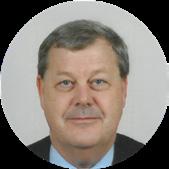

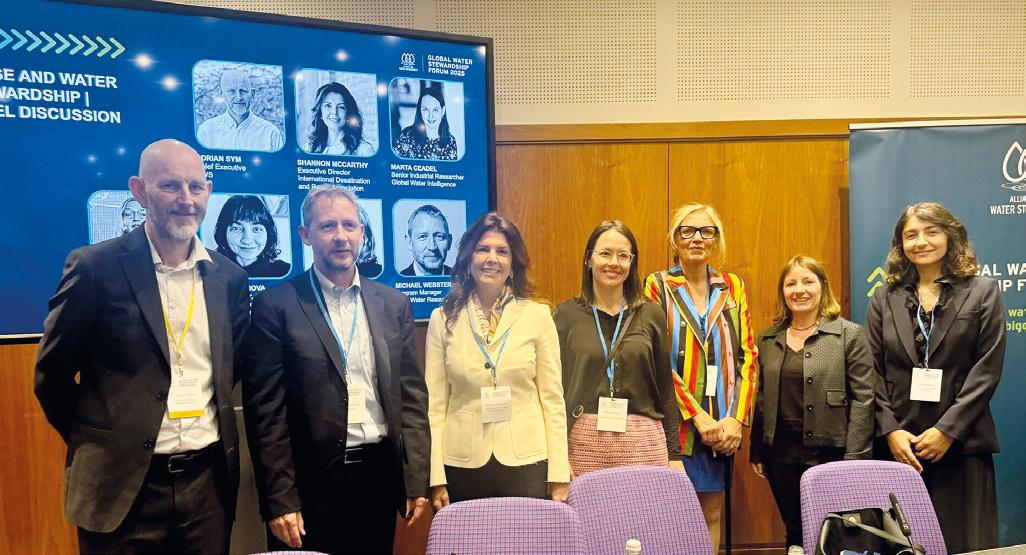
IDRA AND AWS UNITE TO ADVANCE GLOBAL WATER REUSE THROUGH STEWARDSHIP
In the face of accelerating global water stress, the International Desalination and Reuse Association (IDRA) and the Alliance for Water Stewardship (AWS) co-led a high-impact session last week at the AWS Global Water Stewardship Forum, focused on the critical intersection of water reuse and stewardship.
Held in Edinburgh, the session titled “Scaling Water Reuse Through Stewardship,” brought together leaders from across the water sector to explore how to ensure that expanding reuse efforts are grounded in equity, resilience, and sustainability.
“Reuse alone isn’t enough,” said Shannon McCarthy, IDRA Secretary General and
session co-moderator. “Stewardship ensures that the technology we deploy serves people, ecosystems, and long-term resilience.”
Co-moderated by Adrian Sym, CEO of AWS, the session builds on momentum from the joint IDRA-AWS dialogue launched at the IDRA World Congress in Abu Dhabi. The message in Edinburgh was clear: reuse technologies must be embedded within collaborative frameworks to be effective and future-ready.
A Multi-Sector Perspective on Reuse
The panel featured a dynamic group of experts advancing reuse across sectors:
• Marta Ceadel (Global Water Intelligence) shared insights on industrial reuse and the financial and regulatory levers that can accelerate adoption.
• Victoria Edwards (FIDO Tech) spoke to innovations that extend beyond the plant, emphasizing the importance of stakeholder engagement and transparency.
• Fidan Karimova (Water Environment Federation) illustrated how circular water economy principles are being applied in practice.
• Céline Montauriol (Azura Group) made the case for public-private partnerships to scale investment in resilient water infrastructure.
• Michael John Webster (2030 Water Resources Group, World Bank) presented pathways to scale global reuse through policy alignment and system thinking.
Each speaker reinforced the same core idea: technological progress must be paired with inclusive governance and watershed-level planning to deliver meaningful outcomes.
Stewardship as the Foundation
While water reuse is becoming a central strategy in adapting to scarcity, there’s growing recognition that technology alone can’t solve the complex challenges of water security. Stewardship—guided by standards like the AWS Standard—offers a framework for balancing environmental, social, and economic priorities.
“When reuse is guided by stewardship, we don’t just manage water risks,” said Sym. “We help build resilient communities and ecosystems.”
Next Stop: Reykjavik
The AWS Forum session reflects a broader partnership between IDRA and AWS, formalized in 2024 through a Memorandum of Understanding focused on integrating reuse and desalination into stewardship practices and global education efforts.
That partnership will continue this October at the IDRA Reykjavik Summit for Climate Adaptation and Mitigation, where both organizations will co-host the panel: “Water Stewardship and Adaptation: Advancing Resilient Communities and Watersheds Through Policy, Technology, and Collective Action.”
A Shared Vision for the Future
As climate and water pressures grow, so does the need for holistic approaches. The Edinburgh session underscored a shared vision between IDRA and AWS, one where reuse technologies are not just efficient, but also just, inclusive, and durable.
By aligning innovation with stewardship, the water community can move from reactive risk management toward long-term resilience.
WORLD BANK REPORT: SCALING WATER USE: A TIPPING POINT FOR MUNICIPAL AND INDUSTRIAL USE
Report Commentary by the International Desalination and Reuse Association (IDRA)
Turning Waste Into New Water
Every day, cities and industries generate almost one billion cubic meters of used water. Most of it is discharged untreated into rivers, seas, and the environment. The World Bank’s report Scaling Water Reuse: A Tipping Point for Municipal and Industrial Use delivers a clear message to our industry: this must change.
Currently, potable and industrial reuse account for only three percent of municipal freshwater withdrawals worldwide. The report shows that with the right policies, financing models, and technical frameworks, reuse capacity could grow eightfold by 2040 and unlock 340 billion dollars in investment. That is not speculation. It is a data-backed opportunity for governments, utilities, and industries to act today.
A Practical Framework
The World Bank highlights five transitions needed to drive this growth:
• Assign true value to clean water through policy and pricing.
• Target high-value reuse applications where demand is strong.
• Normalize “new” water in municipal and industrial supply planning.
• Scale from isolated projects to programmatic, portfolio-level approaches.
• Engage private sector innovation and finance to accelerate implementation.
These transitions form a blueprint for integrating reuse as a core part of water supply, not an experimental side stream.
IDRA’s Perspective
IDRA views this report as essential reading for utilities, industry leaders, and policymakers. Our mission is to advance global water security through innovation and collaboration. We serve as a knowledge hub, a convener, and an advocate, promoting integrated management of water, energy, and food resources. We work to accelerate adoption of new technologies and to build partnerships between the public and private sectors to scale reuse and desalination.
The World Bank’s framework reflects exactly what we see among our members worldwide. Projects that embed reuse in master plans are strengthening supply security. Industries that integrate reuse into operations are improving efficiency. Public utilities that enable private finance and technology are delivering services more sustainably.
Why It Matters Now
Water scarcity and climate pressures are intensifying in every region. Reuse is not a niche technology. It is a proven, scalable solution that must be part of every serious water security strategy.
Scaling Water Reuse: A Tipping Point for Municipal
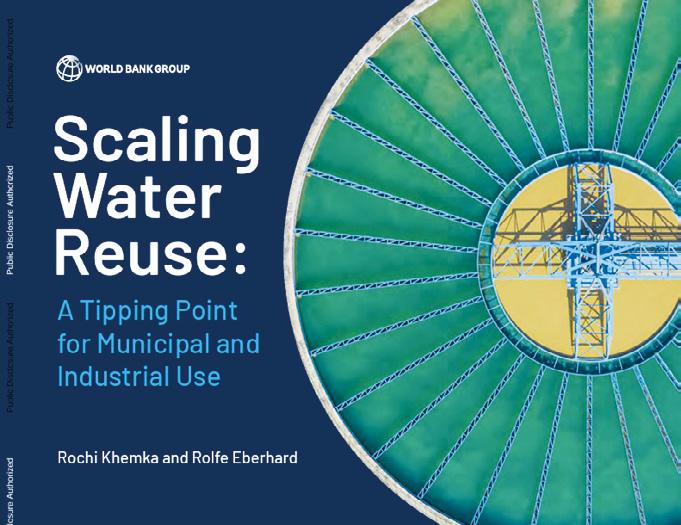
and Industrial Use is a must read for our industry. You can find it here. IDRA is proud to support and amplify these findings. We look forward to working with our members, governments, and
partners to turn these insights into action, ensuring that used water becomes a dependable resource for communities, industries, and ecosystems for generations to come.
Documents & Reports
Scaling Water Reuse: A Tipping Point for Municipal and Industrial Use: Complete report
COMPLETE REPORT >>>>>>
Governance and Economics of Desalination and Reuse : Volume 1 - Adjusting Policy and Regulatory Frameworks to Go Mainstream
COMPLETE REPORT >>>>>>
Governance and Economics of Desalination and Reuse : Volume 2 - Sector-Level Governance Models (Vol. 2) COMPLETE REPORT >>>>>>
Governance and Economics of Desalination and Reuse : Volume 3 - Evaluating Economic Viability Using Modern Portfolio Theory (Vol. 3)
COMPLETE REPORT >>>>>>
Governance and Economics of Desalination and Reuse : Volume 4 - Selecting the Appropriate Project Delivery Model and Financial Structure (Vol. 4) COMPLETE REPORT >>>>>> cubic meters of used water generated daily
Potential to grow reuse eightfold by 2040 is reused for municipal and industrial supply
Up to 340 billion dollars in investment unlocked 1 BILLION 8X ONLY 3% 340 BILLION
BE WATER POSITIVE SETS SAIL: CANADA OCEAN RACING CARRIES A MESSAGE FOR THE WORLD
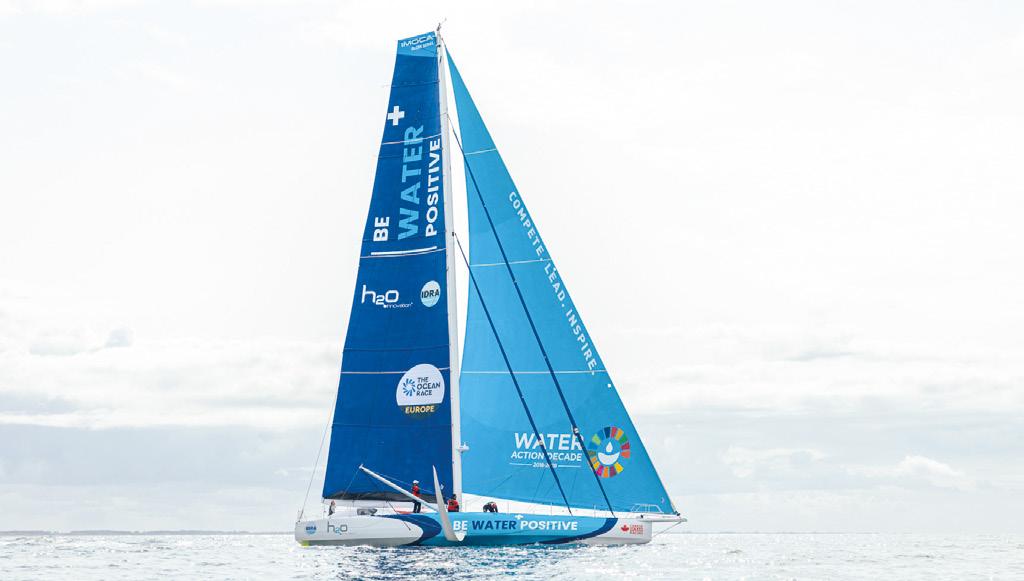
In a world increasingly defined by water scarcity, climate uncertainty, and the urgent need for resilient infrastructure, the water industry has never had a more important role to play. Yet, in the midst of transformative innovation and engineering breakthroughs, the sector often lacks a visible, emotionally compelling stage and diverse global audience reach, from which to share its story.
That’s where Canada Ocean Racing – Team Be Water Positive comes in.
Led by Canadian skipper and entrepreneur Scott Shawyer, this professional offshore sailing campaign is far more than a sporting endeavour. It’s a purpose-driven platform built to amplify the voices, innovations, and values of the global water community. By competing in some of the most demanding solo and crewed ocean races on Earth,
the team captures the imagination of audiences worldwide—while carrying a message that resonates deeply with the values and the work of IDRA members.
The Be Water Positive mission is grounded in the same principles that guide engineers, innovators, and water professionals every day: resilience, sustainability, precision, and performance under pressure.
In the open ocean—thousands of miles from shore— this team lives by those principles. Every litre of water used on board is desalinated and reused. Every decision is governed by system efficiencies, renewable energy, and resource limitations. This is not simply a race, it’s a live demonstration of applied resilience in one of the world’s most extreme environments.
Through this lens, Team Be Water Positive becomes a unique, high-impact platform for water industry storytelling and leadership. It provides IDRA members and water sector brands with a rare opportunity to connect with global audiences, raise the profile of their innovations, and demonstrate commitment to sustainability and climate resilience. We are inviting IDRA members to join us as collaborators in the Be Water Positive campaign.
This partnership goes far beyond a logo on a sail. It is a shared opportunity to:
• Position your brand as a leader in water sustainability on a global stage,
• Engage customers and stakeholders through authentic storytelling and adventure-based communication,
• Showcase innovation in action, linking your technology or service to a dynamic, real-world narrative,
• And importantly, to be part of a coalition that raises the urgency of water resilience on the global agenda.
The team’s partners benefit from high-visibility media campaigns, content co-creation opportunities, stakeholder engagement activations, and event-based platforms in major port cities around the world. With a four-year campaign ahead, including the most professional and broad reaching offshore races in the world, including The Ocean Race portfolio of events, the IMOCA class events, and the solo, non-stop, unassisted around the world epic, The Vendee Globe.
Over this four-year cycle, partners have both time and momentum to build something that is not only extraordinary, but with very significant impact.
The next major event on the campaign schedule is The Ocean Race Europe. This is a series of races between major ports commencing in Kiel, Germany of the 10th
of August 2025, with host venue finish and start ports in the UK, Spain, France (Mediterranean), Italy and finishing in Montenegro mid September. This event offers an amazing opportunity to host guests and interact with the team. The media impact of this event alone is very substantial (1.7M Social Media community; Instagram 286K followers, Facebook 1.1M, Youtube 180K subscribers, LinkedIn 41K, TikTok 10.1K, X/Twitter 107.5K followers) and Warner Bro’s Discovery is creating a documentary film around the race featuring Scott and Team Be Water Positive.
In 2026 the team will be on a promotional tour in the North East Canada and America before racing across the Atlantic from New York to Barcelona. This race will be crewed by four sailors of which this team will be gender equal (two men and two women). In 2027 the team will race around the world with start and finish ports in Europe, South Africa, Australasia (New Zealand), Brazil, North America, and for the first time in the history of this race the finish will be in Saudi Arabia.
The water sector holds the answers to many of the greatest challenges of our time. But to accelerate awareness, investment, and impact, we need bold ways to bring those solutions to life for broader audiences.
Canada Ocean Racing – Team Be Water Positive is extending an open invitation to IDRA members: join us, as partners and storytellers, in a mission that elevates our shared values and innovations on a truly global scale.
Together, we can ensure that water resilience is not only engineered—but seen, understood, and championed around the world.
For partnership enquiries or to explore how your organisation can get involved, please contact: Shannon McCarthy smccarthy@idrawater.org
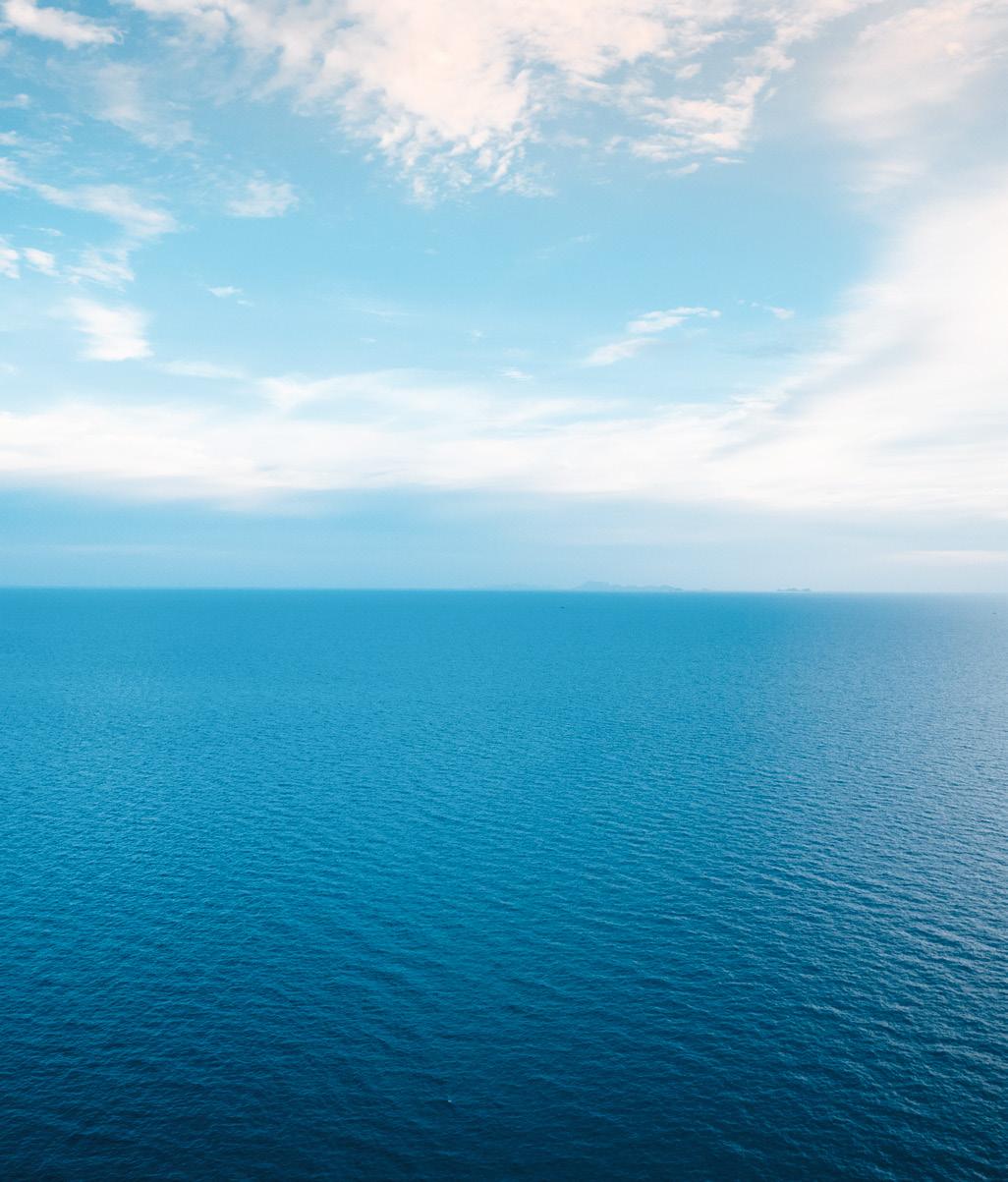

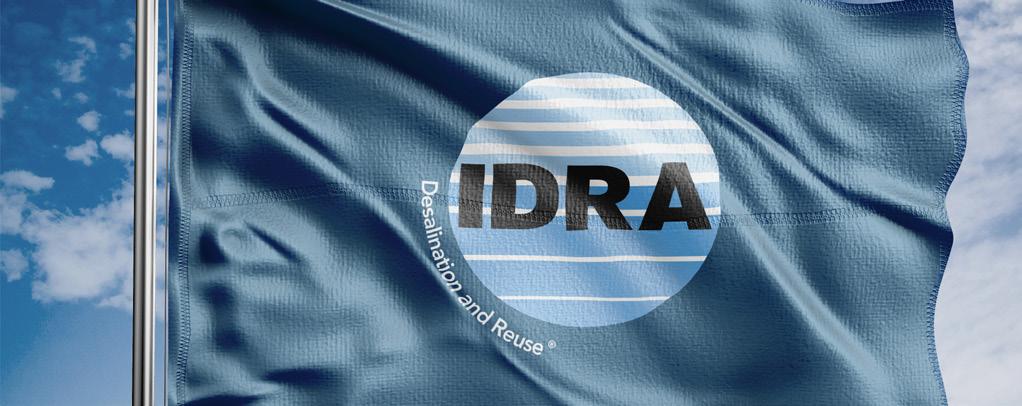
Your Voice. Your Association. Your Constitution.
The International Desalination and Reuse Association (IDRA) has issued a formal notice to Class I and II members regarding two proposed constitutional amendments, with voting set to take place in accordance with Article VIII of the IDRA Constitution.
Amendment 1 formalizes the Association’s legal incorporation status, reflecting our updated name "IDRA" and our transition from New Jersey to Delaware. This change ensures our governing documents remain aligned with our legal identity and public records.
Amendment 2 proposes a restructuring of our affiliate membership model to support more meaningful, reciprocal partnerships through Memoranda of Understanding (MOUs), while streamlining affiliate voting rights to those
with formal agreements. This shift enables more flexible, goal-driven collaborations with our global partners and aligns with nonprofit governance best practices.
Voting will open between 40–70 days from this notice and remain active for 50 days. Approval requires a two-thirds majority of returned ballots and participation from at least one-third of eligible members.
We encourage all Class I and II members to review the full details of the proposed amendments and prepare to cast your vote.
Please read the full notice and amendment text at: Constitutional Amendments and Upcoming Vote
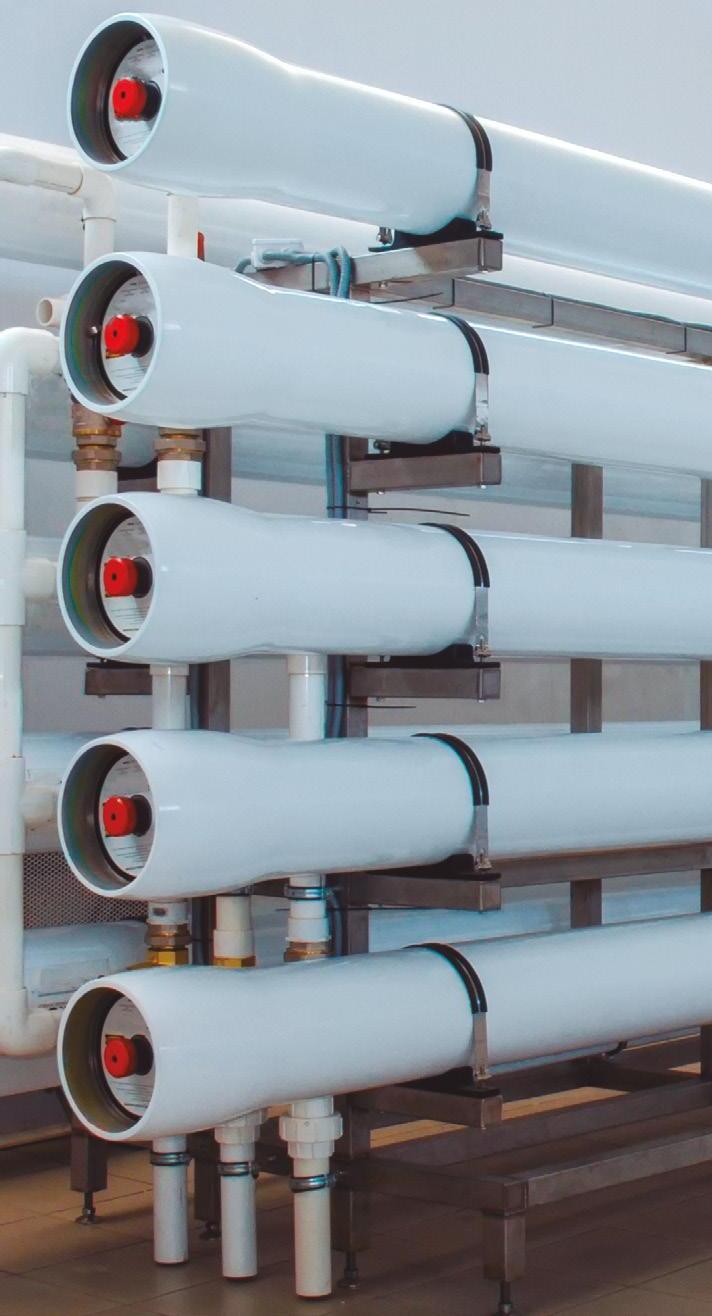
DR. K.C. CHANNABASAPPA MEMORIAL PHD SCHOLARSHIP 2025
The IDRA Dr. K.C. Channabasappa Memorial PhD Scholarship is to encourage engineers and scientists to further their education in subjects related to desalination and water re-use. The Scholarship provides financial assistance to undergraduate students who have been accepted into a graduate program of doctoral studies and who intend to pursue a desalination and water reuse related research thesis.
The application process for the 2025 Scholarship Program will be opening April 1 2025 and the submission deadline for applications is August 31, 2025.
Eligibility Criteria
ʞ Applicants must have graduated from an accredited university and must be from the top 10% of their class in science or engineering.
ʞ The applicant must prove full-time admission to a graduate program of doctoral studies in desalination or water re-use and must exhibit leadership and achievement potential.
ʞ Applicants must be an IDRA member.
Monetary Award
The total maximum grant per student is up to $10,000 USD. The award is paid in two equal installments: the first upon notification that the recipient has won, and the second after IDRA has received a mid-term progress report from the student’s academic advisor. The individual selected for scholarship must have other sources of funds to supplement this grant that will allow the student to complete graduate degree requirements.
Basis of Award Application
Applications are considered on the basis of their undergraduate and graduate transcripts, university staff and IDRA member references along with the individual’s motivation statement for a planned career in desalination or water re-use technologies.
All applications must be submitted using the scholarship form located on the IDRA website: Academy Scholarship Program IDRA | The Global Desalination and Water Reuse Community
All general inquiries should be sent to: education@idrawater.org
DOWNLOAD APPLICATION FORM
THE SUBMISSION DEADLINE FOR APPLICATIONS IS AUGUST 31, 2025.
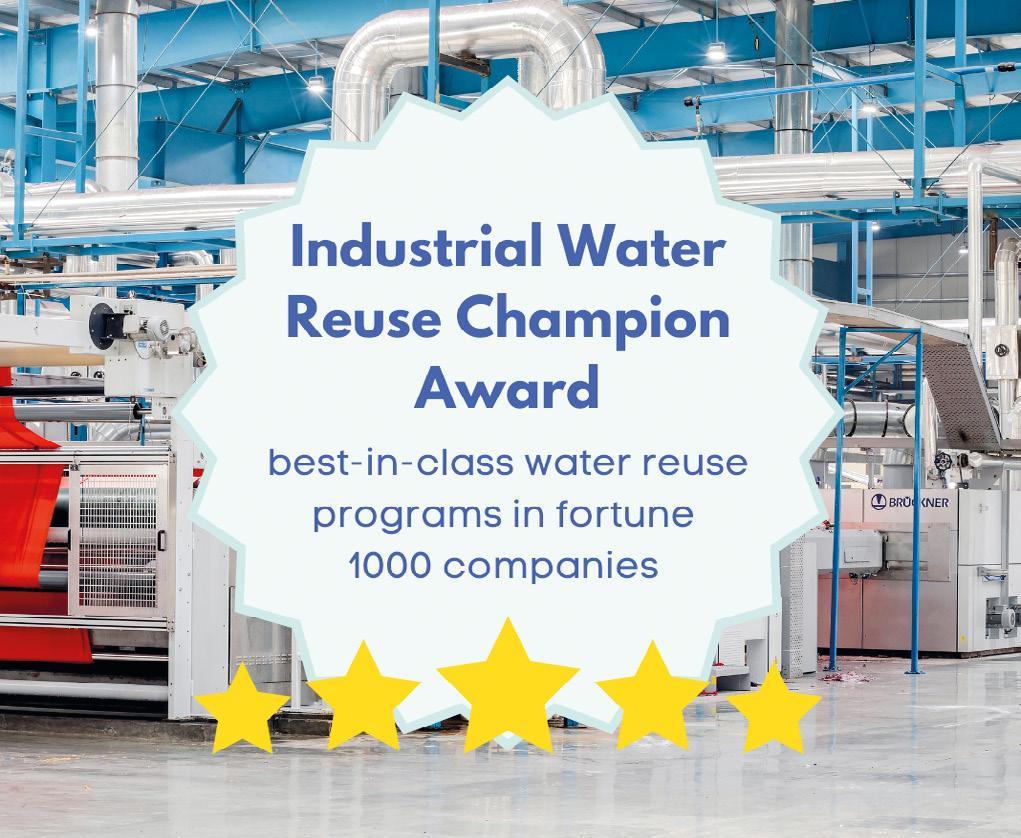
FORTUNE 1000 FIRMS INVITED TO 2025 GLOBAL INDUSTRIAL WATER REUSE CHAMPIONS AWARD
The International Desalination and Reuse Association (IDRA), alongside the WateReuse Association, U.S. Chamber of Commerce, Veolia, the University of Pennsylvania Water Center, and under the framework of the U.S. EPA’s National Water Reuse Action Plan (WRAP), today reopens nominations for the 2025 Global Industrial Water Reuse Champions Award. This award recognizes Fortune 1000 companies that demonstrate exceptional leadership
in circular water management through best-in-class water recycling and reuse within industrial operations.
Eligible nominees span:
• Industrial end-users implementing internal or on-site water reuse systems.
• Water suppliers delivering reclaimed water to industrial facilities.
• Technology providers enabling industrial-scale reuse watercenter. Water center - Water Tech Online - Water Reuse
Submissions are open now and close on August 15, 2025.
Past recipients have included global leaders like Amazon Web Services , which plans to replace 800 million gallons of freshwater annually with recycled water across over 100 U.S. data centers by 2030, and Microsoft, which has delivered approximately 25 million m³ of water back into watersheds through reuse activities across its global operations.
Other recognized companies include Kimberly-Clark, Carlsberg, Apache, PepsiCo, and Intel, each implementing innovative reuse strategies. Intel alone invested around US $1 billion in facilities capable of recovering 98% of wastewater for reuse in cooling towers and surrounding community recharge.
Kimberly-Clark has already reduced water consumption by >40% at its manufacturing sites in stressed regions (toward a 50% target by 2030), and Carlsberg’s Danish brewery eliminated nearly 500,000 m³ of freshwater use annually thanks to closed - loop systems.
Nominations should include:
• A concise company overview
• Details of water reuse program achievements, including data on volumes saved and innovate system design.
• Visual aids or documentation showcasing outcomes.
Finalists are evaluated on measurable freshwater savings, system innovation, reproducibility, and contributions to ESG and WRAP goals.
This award offers a coveted platform to highlight real-world impact: transforming industrial water use and accelerating global best-practice adoption. All nominations must be submitted by August 15, 2025 via WateReuse’s award portal.
Key dates:
• Nomination deadline: August 15, 2025 linkedin.com
• Winners announced: December 2025 at the IDRA World Congress, Abu Dhabi
IDRA APPOINTS CAMILLE CALIMLIM TOUTON AND LUIS NEVES AS SPECIAL ADVISORS TO ACCELERATE SMART WATER SOLUTIONS AND GLOBAL RESILIENCE
New appointments bring infrastructure expertise, digital innovation, and strategic depth ahead of major international events
The International Desalination and Reuse Association (IDRA) is proud to announce the appointment of two globally recognized leaders to its Special Advisory Board: Camille Calimlim Touton, former Commissioner of the U.S. Bureau of Reclamation, and Luis Neves, CEO of the Global Enabling Sustainability Initiative (GeSI).
Together, these appointments strengthen IDRA’s ability to connect innovation, policy, and on - the - ground implementation as the organization prepares for the IDRA Reykjavik Summit on Water and Climate Change in October 2025 and the IDRA World Congress 2026 in Riyadh.
Strengthening Global Water
Infrastructure: Camille Calimlim Touton
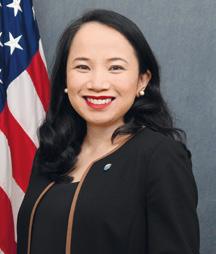
A former Commissioner of the U.S. Bureau of Reclamation, Camille Calimlim Touton oversaw more than $13 billion in federal investments to modernize critical water systems across the American West during historic drought conditions. Her work championed collaboration with Tribal governments, rural communities, farmers, and municipal utilities to build inclusive and climate-resilient water strategies.
“We are honored to welcome Camille Touton as a Special Advisor,” said Jon Freedman, President of IDRA. “Her leadership in large - scale infrastructure, policy development, and resilience planning adds another dimension to IDRA’s mission. Camille’s experience will help guide our community in designing and financing water projects that meet both immediate needs and long - term sustainability objectives.”
Touton’s deep experience in federal infrastructure and drought resilience will support IDRA’s global initiatives, ensuring lessons learned in the U.S. can inform water reuse and desalination strategies worldwide.
Reflecting on her appointment, Touton said, “Global water challenges require integrated solutions across infrastructure, policy, and community partnerships. I look forward to helping advance IDRA’s mission of promoting sustainable desalination and reuse technologies and ensuring resilient water systems worldwide.”
Shannon McCarthy, Secretary General of IDRA, noted: “Camille brings unmatched insight from years of navigating federal water policy and deploying major infrastructure programs. Her
guidance will help us turn strategic ideas into practical actions that benefit utilities, regulators, and communities in every region.”
Advancing Digital Innovation in Water: Luis Neves
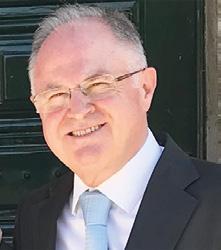
As CEO of GeSI, Luis Neves has led cross-industry collaborations that apply digital technologies such as AI, IoT, and advanced analytics to sustainability challenges. He has been at the forefront of exploring the mutual dependency between water and data: how water enables the growth of data infrastructure, and how data services, in turn, enable smarter, more efficient water production and reuse.
“We are equally honored to welcome Luis Neves as a Special Advisor,” said Freedman. “His leadership in sustainability and digital innovation strengthens IDRA’s ability to shape the global conversation on water security. Luis’s perspective will help us guide the desalination and water reuse community toward solutions that are not only technologically advanced but also aligned with long-term sustainability goals.”
In his advisory role, Neves will guide how IDRA integrates digital innovation across its programs and events. Reflecting on his appointment, Neves said, “Global water challenges demand integrated solutions that connect infrastructure, policy, and technology. Today we see a powerful convergence between water for data and data-driven services that improve how we produce and manage water. I am honored to join IDRA as a Special Advisor and look forward to advancing its work on digital innovation and sustainable water management. Together, we can drive practical solutions that build resilience for communities worldwide.”
McCarthy added: “Luis’s experience in implementing digital strategies will translate directly into how we support our members day to day. From educational programs to resources and events, his insights will help us deliver practical tools and guidance that empower utilities, regulators, and companies to put innovation into action on the ground.”
With Camille Calimlim Touton and Luis Neves joining IDRA’s Special Advisory Board, the organization strengthens its ability to lead at the intersection of innovation, policy, and implementation, helping members and partners around the world build a more secure and sustainable water future.

IDRA STRENGTHENS GLOBAL LEADERSHIP WITH FOUR SENIOR APPOINTMENTS TO BOARD, ACADEMY AND COMMITTEES
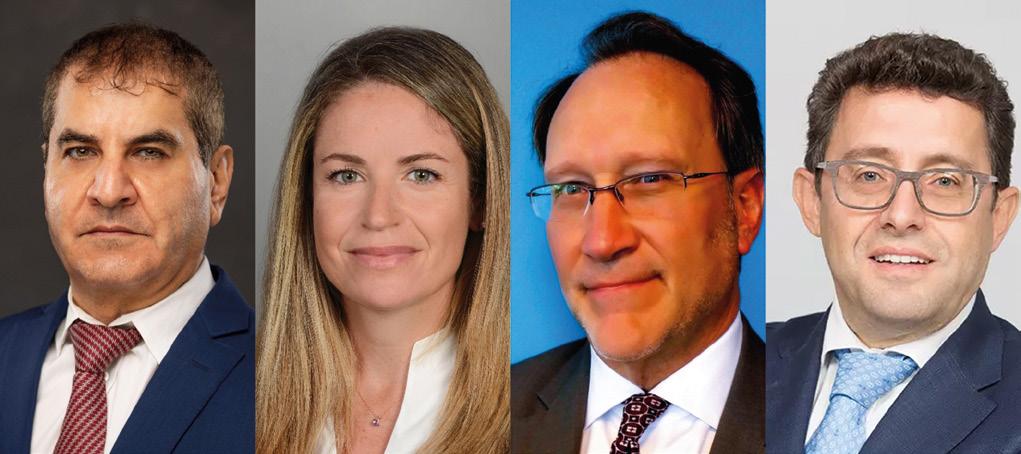
New officers and thought leaders reinforce IDRA’s mission of innovation, governance, and education in water sustainability
The International Desalination and Reuse Association (IDRA) has expanded its leadership team with four key appointments, strengthening both its Board of Directors and its flagship educational platform, the IDRA Academy. These appointments reflect IDRA’s ongoing commitment to good governance, technical excellence, and the advancement of sustainable water solutions worldwide.
In recent weeks, IDRA has welcomed Johnny Obeid as First Vice President of the Board, Dr. Verónica García Molina as Dean of the IDRA Academy, Rachid Ghamraoui as Comptroller and Chairperson of the Audit Committee, and John Hanula as Editor and Chairperson of the Publications Committee. Together, these leaders bring extensive expertise spanning finance, governance, education, innovation, and technical delivery.
Johnny Obeid, Verónica García Molina, Rachid
Ghamraoui, and John Hanula each bring unique expertise that will help us scale our impact through strong governance, cutting-edge knowledge, and meaningful engagement with our members.
Jon Freedman, President of IDRA.
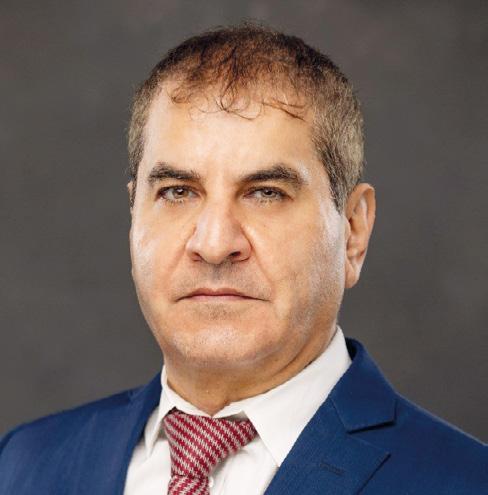
A veteran of Veolia Water Technologies, Johnny Obeid brings over two decades of experience advancing desalination and reuse technologies across the Middle East. He has overseen landmark projects in the UAE, Saudi Arabia, Bahrain, Oman, Kuwait, and Qatar,
Johnny Obeid
First Vice President of the Board
spanning both reverse osmosis and thermal desalination systems.
“Johnny Obeid is one of the most respected and experienced leaders in the global desalination sector,” said Freedman. “His deep technical knowledge and long-standing leadership across the Gulf will be critical as we work to scale sustainable desalination and reuse solutions worldwide.”
In his new role as First Vice President, Obeid will help steer IDRA’s strategic direction, build partnerships, and strengthen the organization’s reach as it prepares for the upcoming Reykjavik Summit on Water and Climate Change and the IDRA World Congress 2026 in Riyadh.
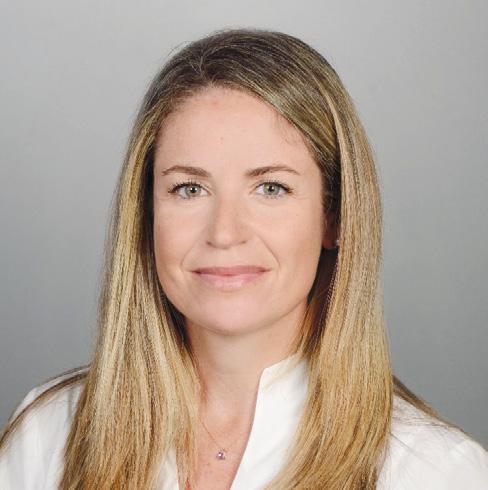
IDRA has also appointed Dr. Verónica García Molina, Global Marketing and Innovation Director at DuPont Water Solutions, as the new Dean of the IDRA Academy. With a PhD in Chemical Engineering from the University of Barcelona and two decades of water sector
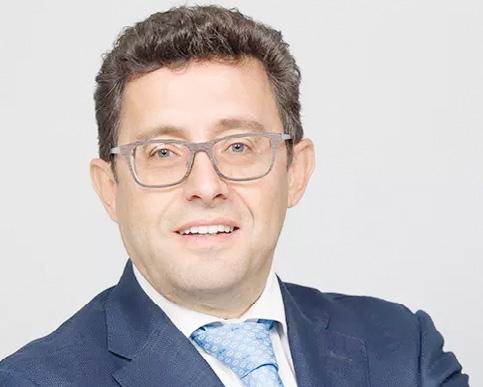
Rachid Ghamraoui, Vice President of BESIX Middle East, has been appointed as Comptroller and Chairperson of the IDRA Audit Committee. He brings nearly a decade of board leadership
Dr. Verónica García Molina
Dean of the IDRA Academy
experience, Dr. García Molina has led strategy across municipal, industrial, and emerging sectors such as green hydrogen and lithium processing.
“Verónica is a dynamic leader whose experience at the intersection of technology, innovation, and education makes her the perfect person to guide the IDRA Academy,” said Freedman. “She will play a key role in advancing our mission to equip water professionals around the world with the tools and knowledge they need.”
As Dean, she will oversee educational programs, technical training, and global partnerships that foster capacity building and empower the next generation of water professionals.
Rachid Ghamraoui
Comptroller and Chairperson of the Audit Committee
experience and deep expertise in governance, finance, and large-scale infrastructure projects.
“Having been on boards for almost a decade, I am honored by the appointment as Comptroller,” said Ghamraoui. “In a world facing growing water scarcity, IDRA’s role in promoting innovation and collaboration in desalination and water reuse is more critical than ever. I look forward to supporting the organization’s impactful initiatives through sound financial stewardship and transparency.”
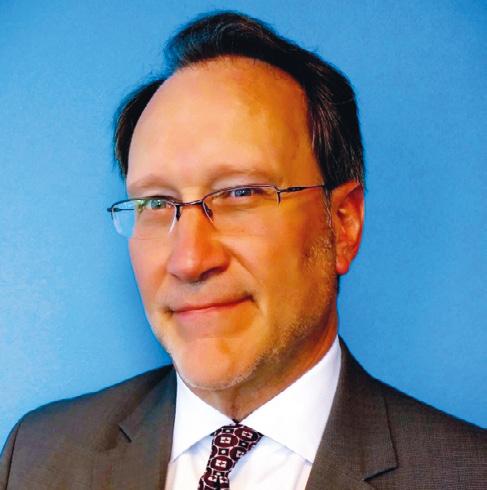
John Hanula, Senior Vice President–Growth and Innovation at Stantec, joins IDRA as Editor and Chairperson of the Publications
John Hanula Editor and Chairperson of the Publications Committee
Committee. With more than three decades of experience in water reuse and sustainable infrastructure, Hanula brings a strong background in communication and thought leadership.
“Having resided in southern California for the past 35 years, reuse of our water is central to daily life,” said Hanula. “It’s been a privilege to be part of thought-leading organizations like WRF, USC, and Stantec, and now to serve on the IDRA Board. I look forward to driving awareness through IDRA’s publications globally.”
A Unified Vision for Governance, Innovation, and Education
These appointments demonstrate IDRA’s proactive approach to ensuring that its leadership reflects the diversity and depth of experience needed to navigate today’s water challenges. From shaping
financial oversight and editorial strategy to advancing technical education and regional expertise, the new leaders will contribute directly to IDRA’s strategic initiatives.
AUSTRALIAN WATER ASSOCIATION
NORTH QUEENSLAND CONFERENCE
2025
1-8 August 2025
Pullman Reef Hotel Casino
Cairns, Australia
CONGRESO ALADYR
6-7 August 2025
São Paulo, Brazil
2025 WATEREUSE CALIFORNIA ANNUAL CONFERENCE
21-23 September 2025
Town and Country Resort
San Diego, California
CLIMATE WEEK NYC 2025
IDRAParticipating
21-23 September 2025
New York City, NY
WEFTEC
IDRAParticipating
27 September – 1 October, 2025
McCormick Place Convention Center
Chicago, Il
TAIWAN INTERNATIONAL WATER WEEK
IDRAParticipating
29-31 October 2025
Taipei, Taiwan
KOREA INTERNATIONAL WATER WEEK
12-15 November 2025
Daegu, Korea

REYKJAVIK, ICELAND SUMMIT ON WATER AND CLIMATE CHANGE
In conjunction with Arctic Circle Assembly. Held under the esteemed patronage of Hon. Guðlaugur Thór Thórdarson, Minister of the Environment, Energy, and Climate of Iceland
12-14 October 2025
Harpa Concert Hall and Conference Centre
Reykjavik, Iceland
JAPAN DESALINATION ASSOCIATION
2 December 2025
YIM Rental Conference Room Ochanomizu
Japan
IWRA WORLD CONGRESS
IDRAParticipating
1-5 December 2025
Marrakech, Morocco
IDRA WORLD CONGRESS 2026
1-5 November 2026
Riyadh, Saudi Arabia
Check out our new website at www.idrawater.org to learn more about upcoming events
IDRA WELCOMES NEW MEMBERS

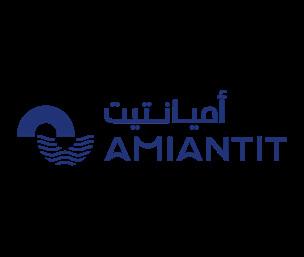
AMIANTIT
Global Leadership in Pipe and Infrastructure Solutions
www.amiantit.com
Amiantit Saudi Arabia was established in 1968, providing integrated solutions in pipe and tank manufacturing technologies. Its products include a wide range of pipes produced to global standards and advanced technologies, specifically designed for water, infrastructure, oil and gas projects.
Amiantit is known for its durable and environmentally-friendly products that contribute to enhancing the sustainability and efficiency of projects. Over the decades, Amiantit has strengthened its reputation through continuous achievements and the development of strong relationships with its customers in both local and international markets.
